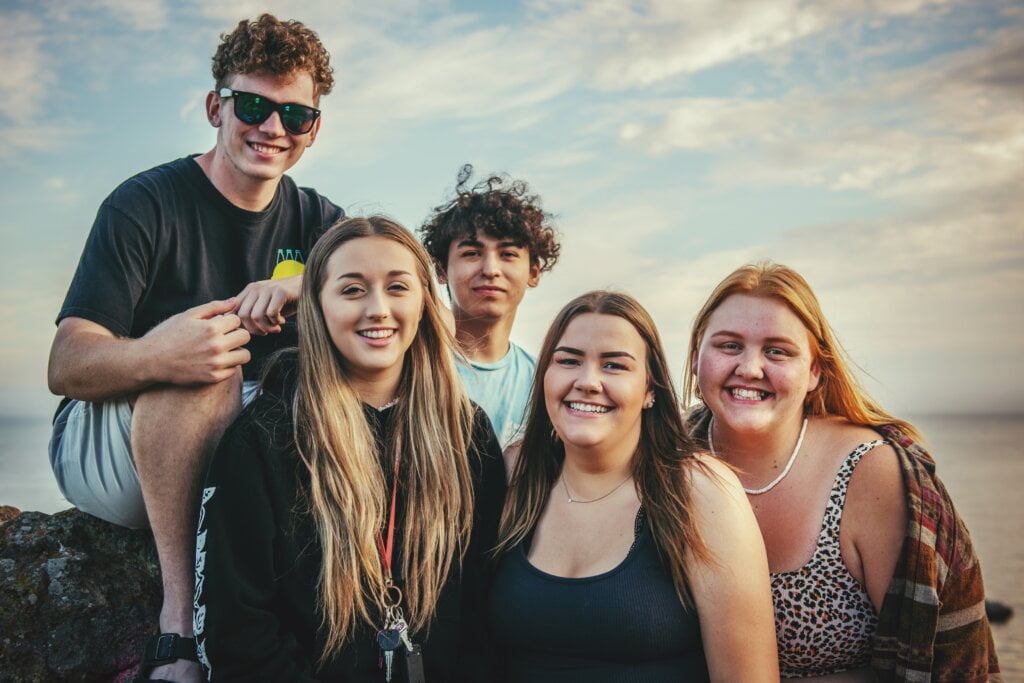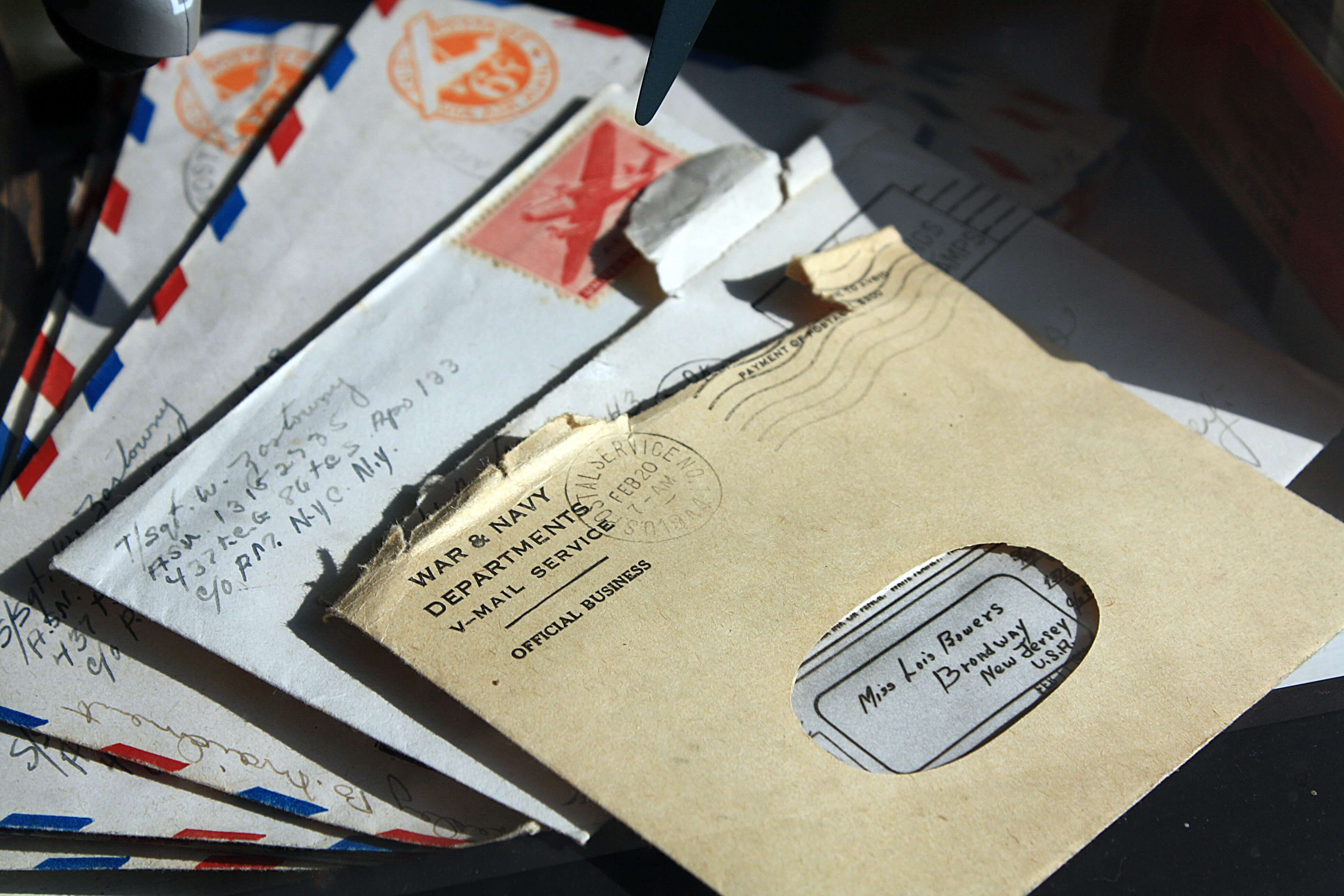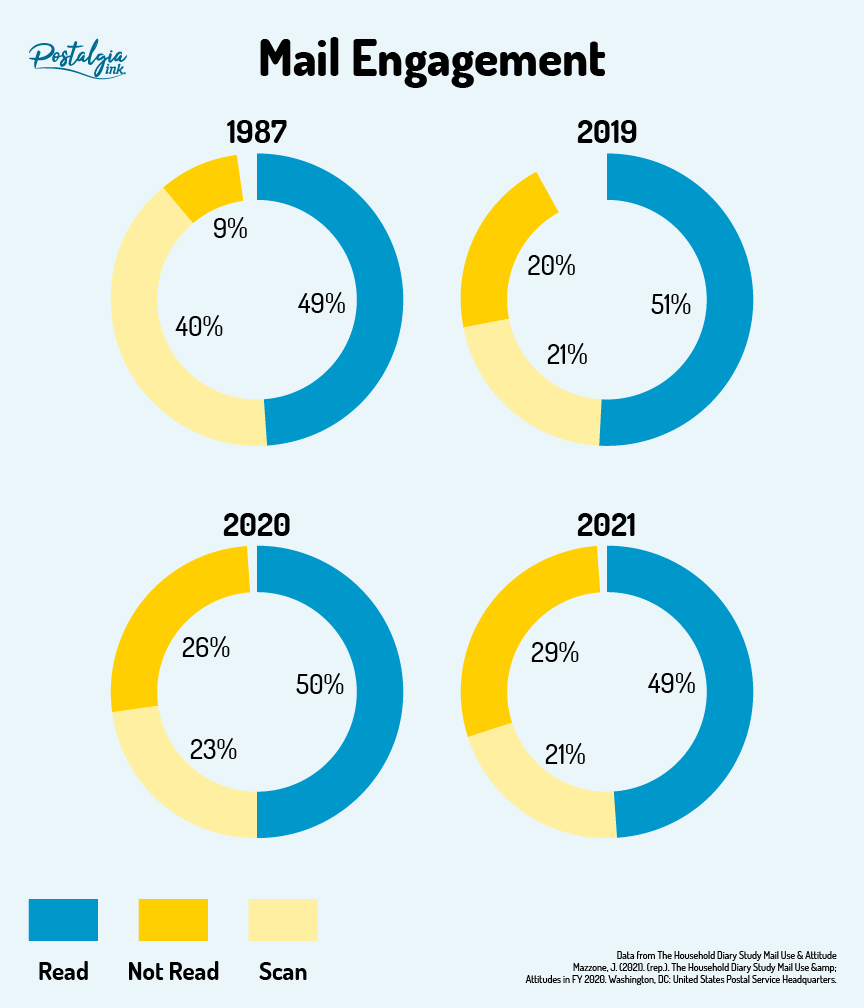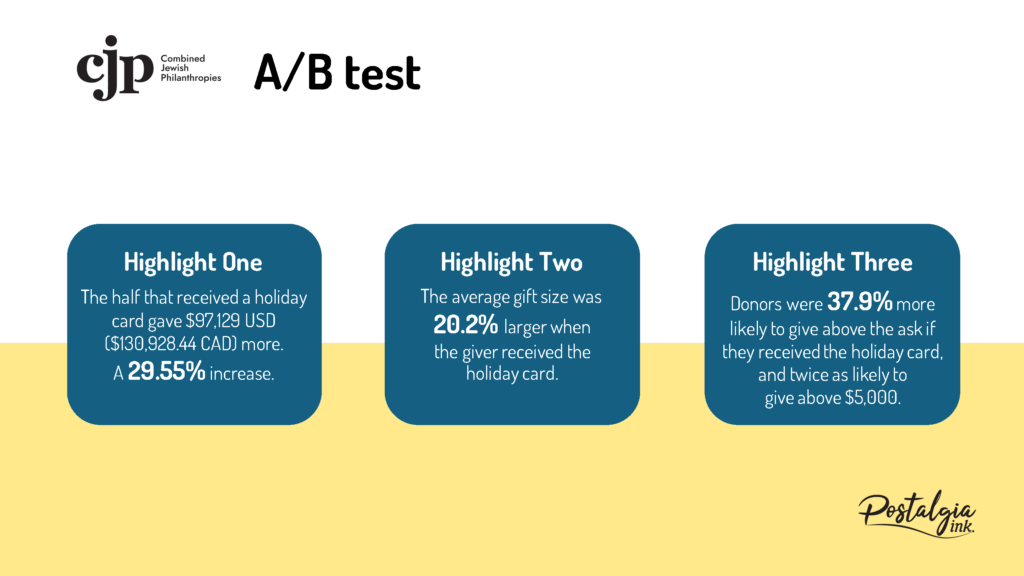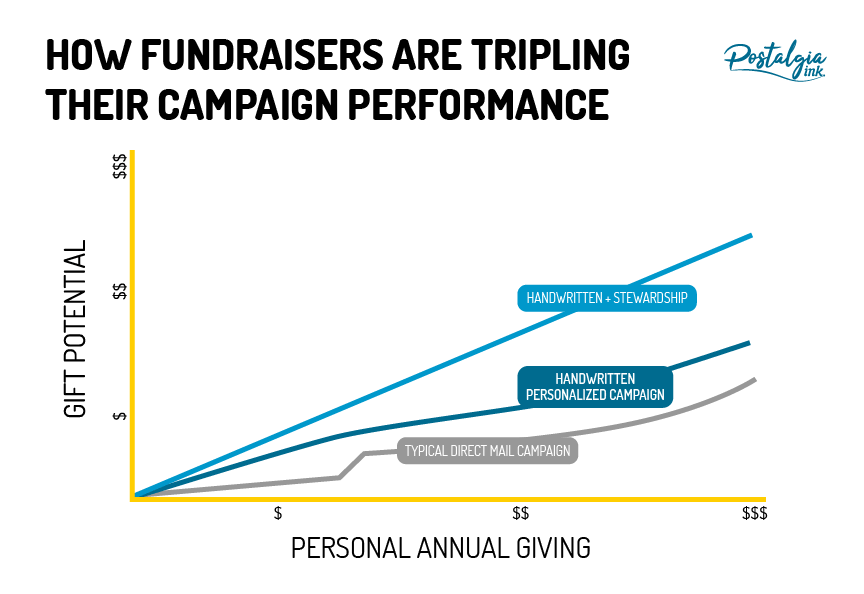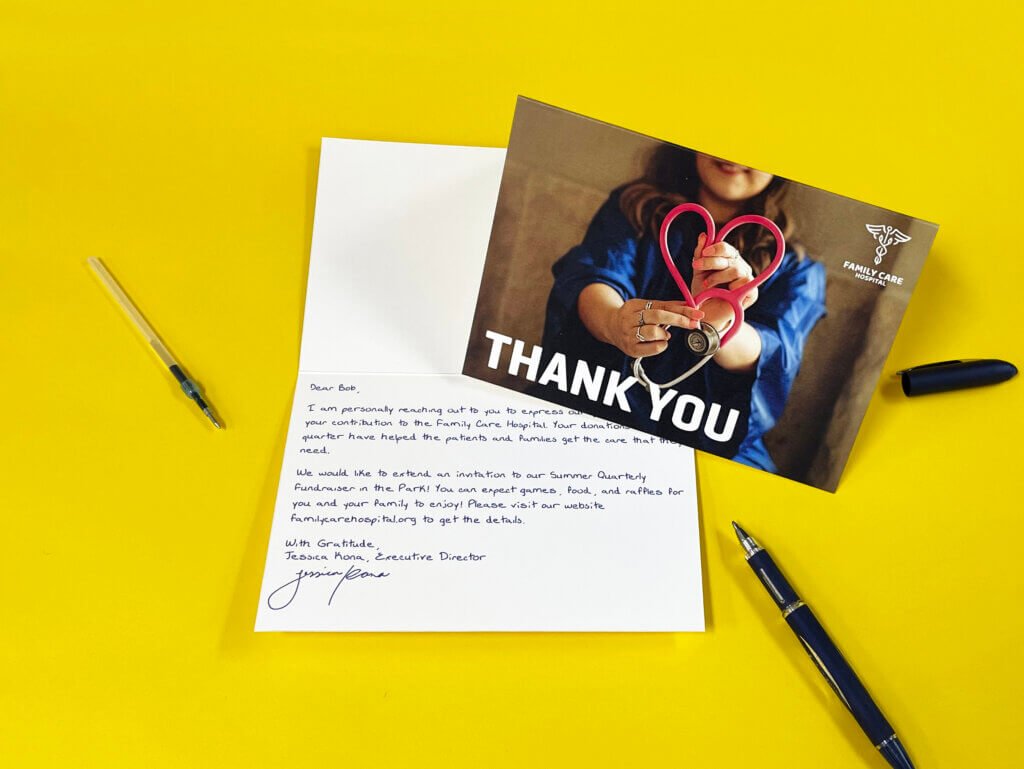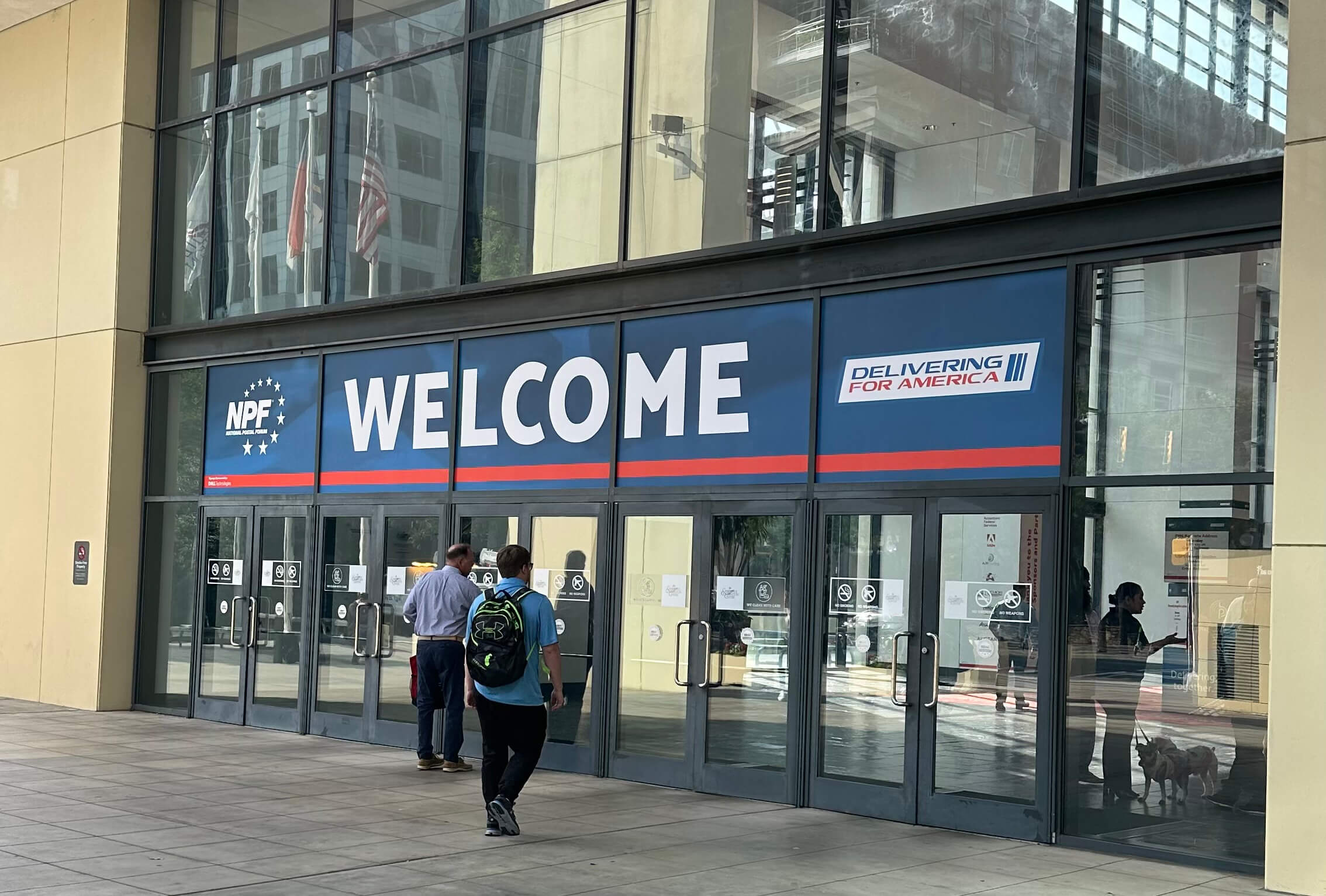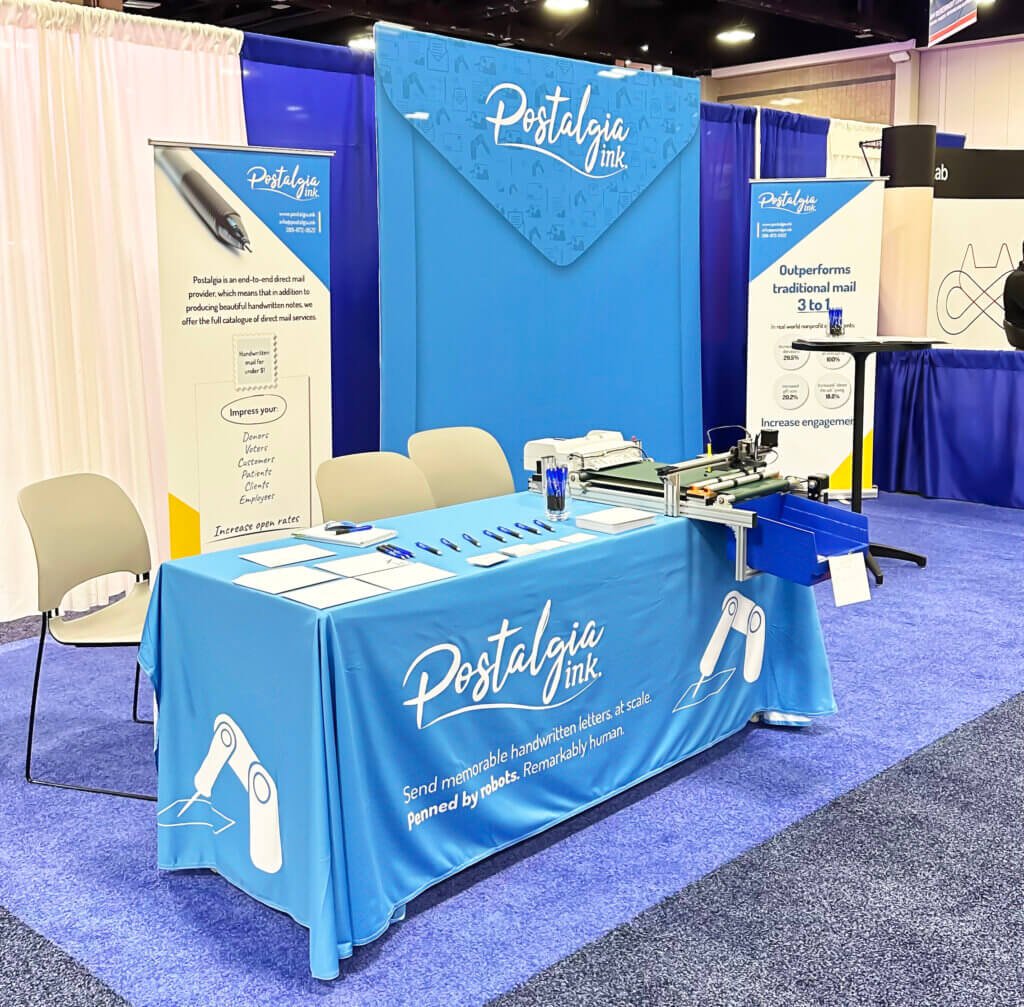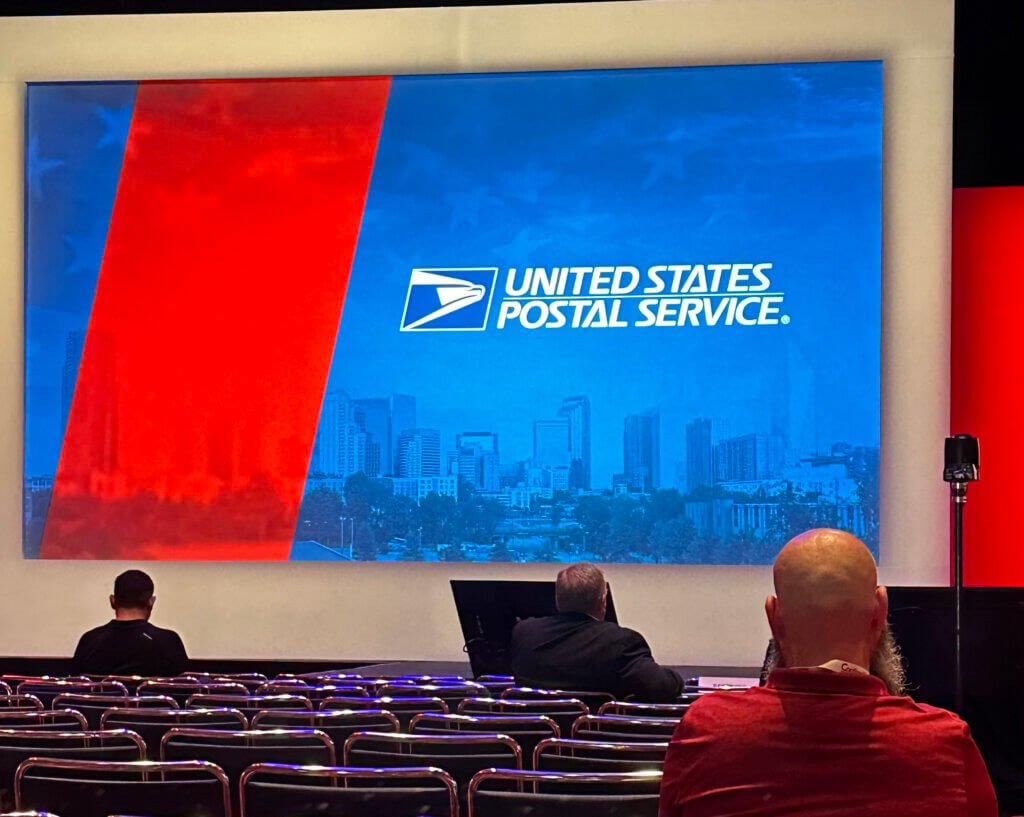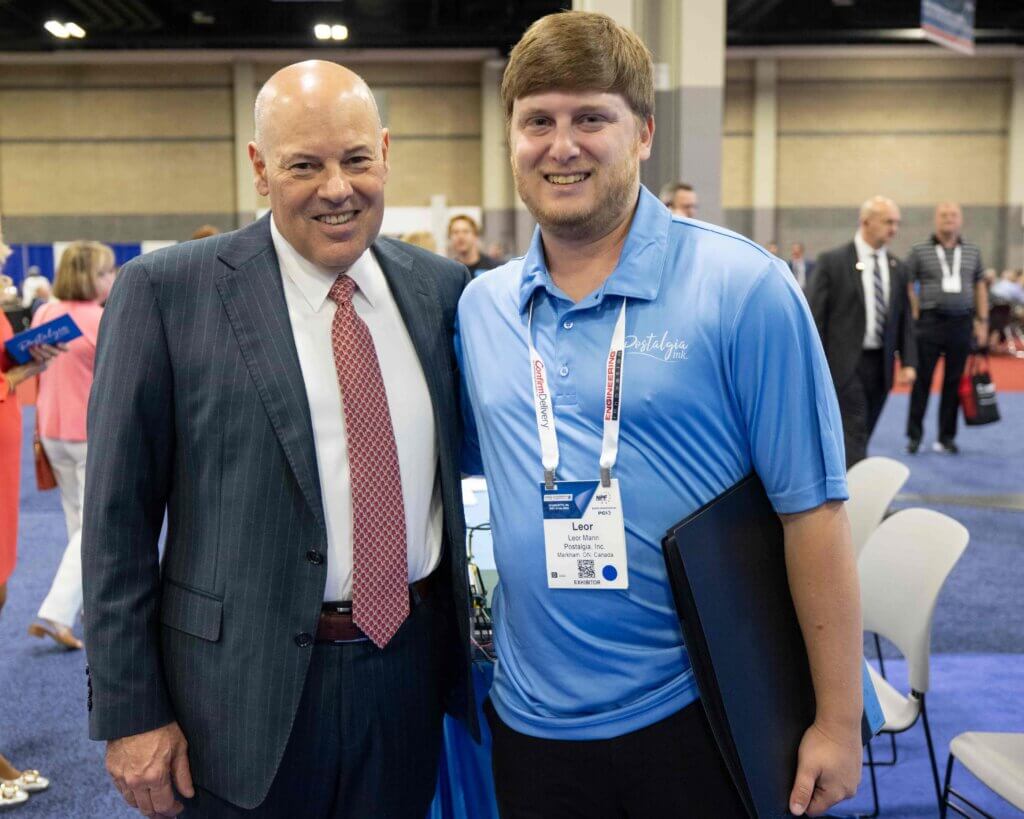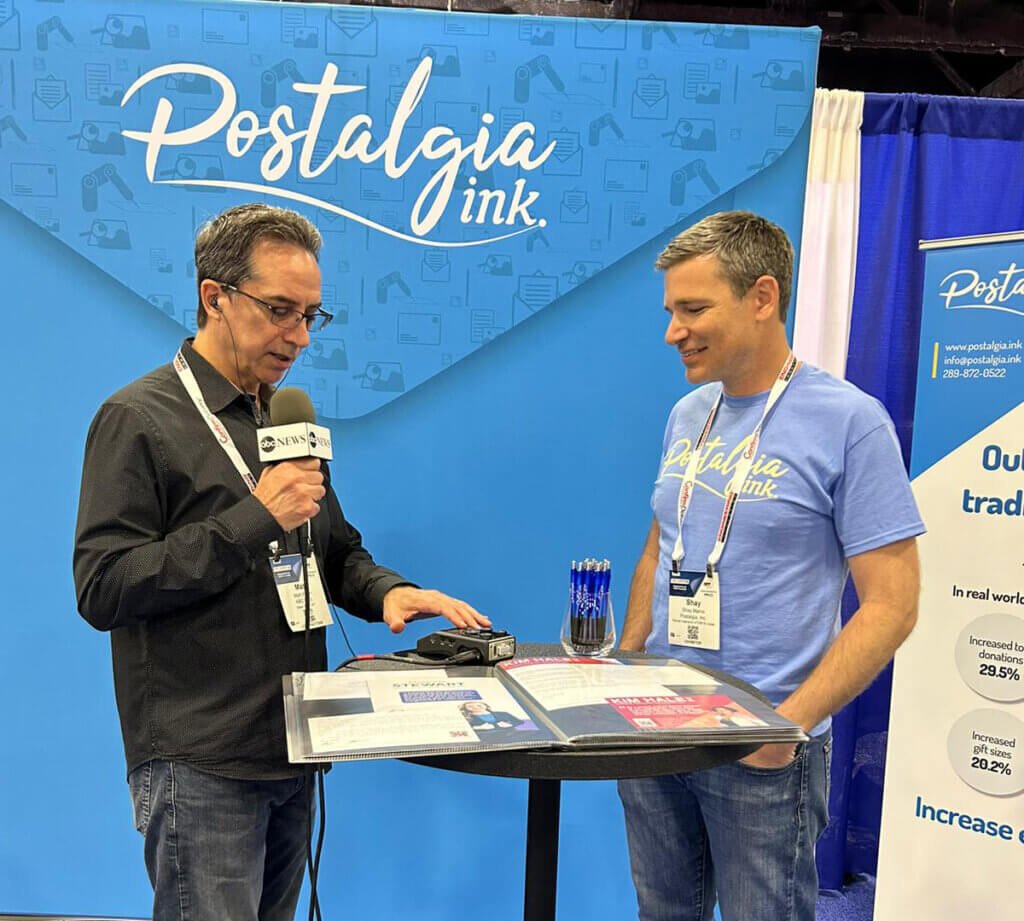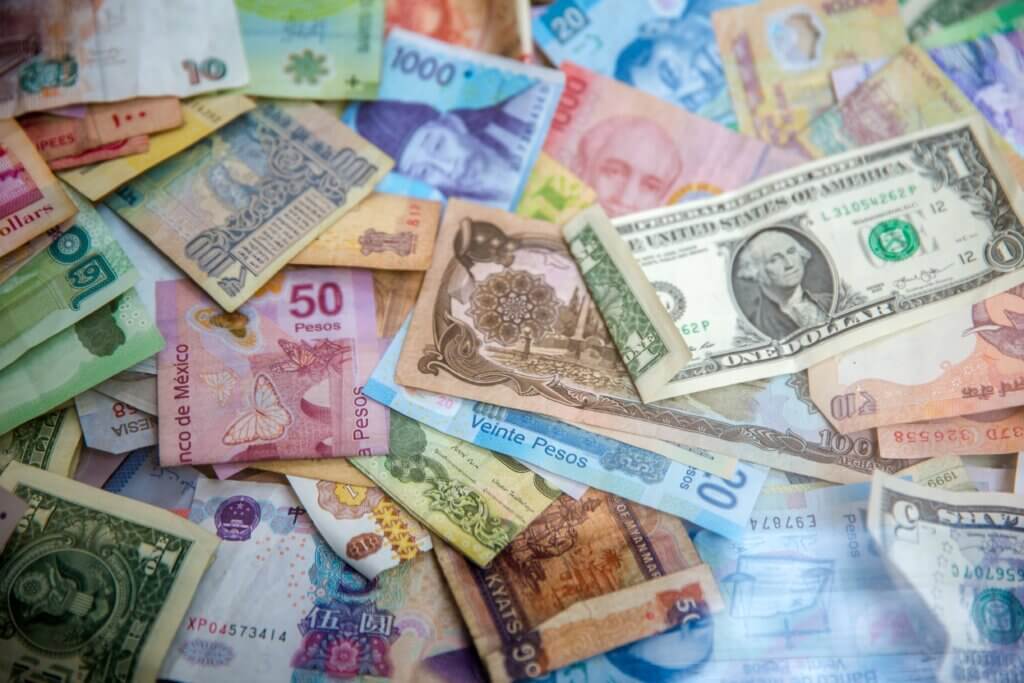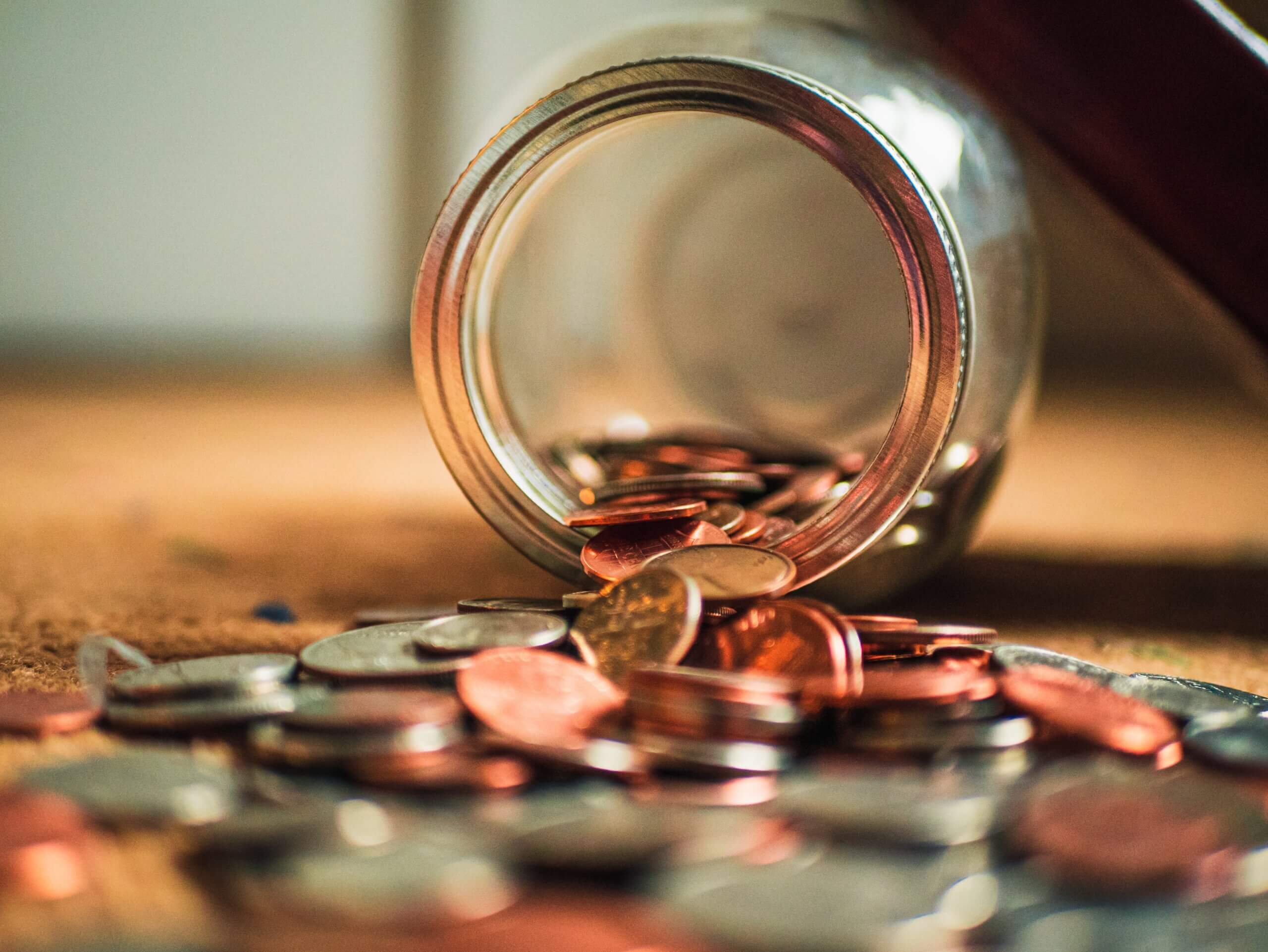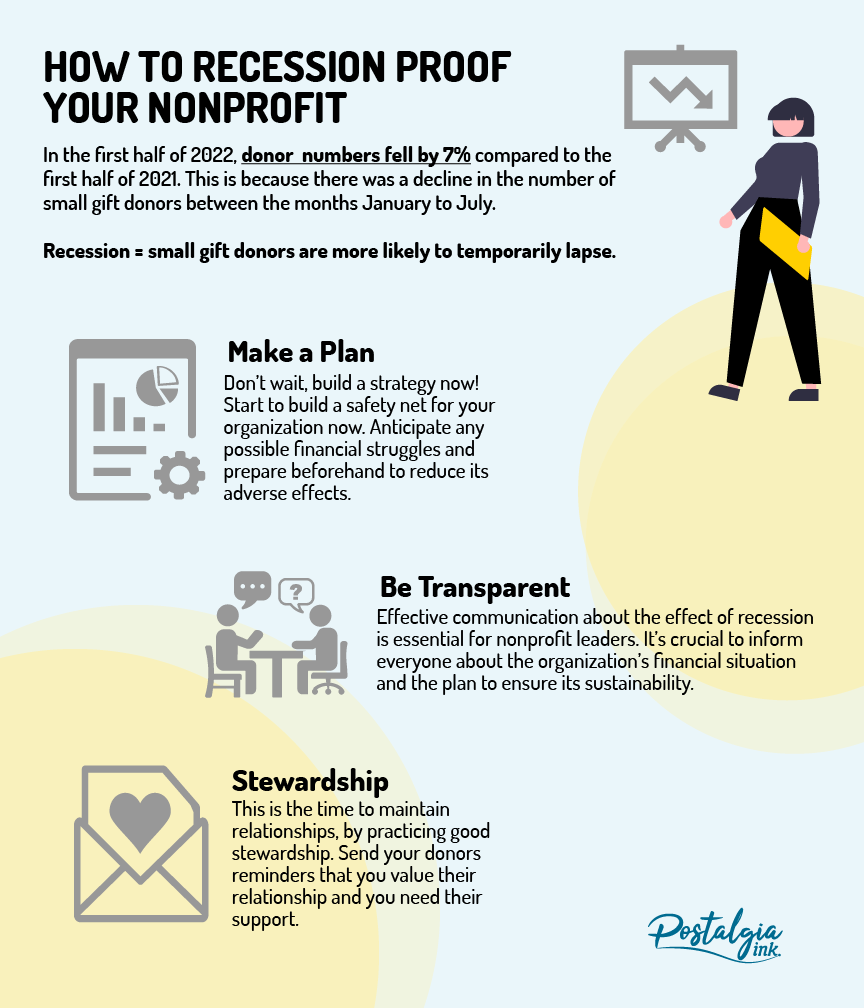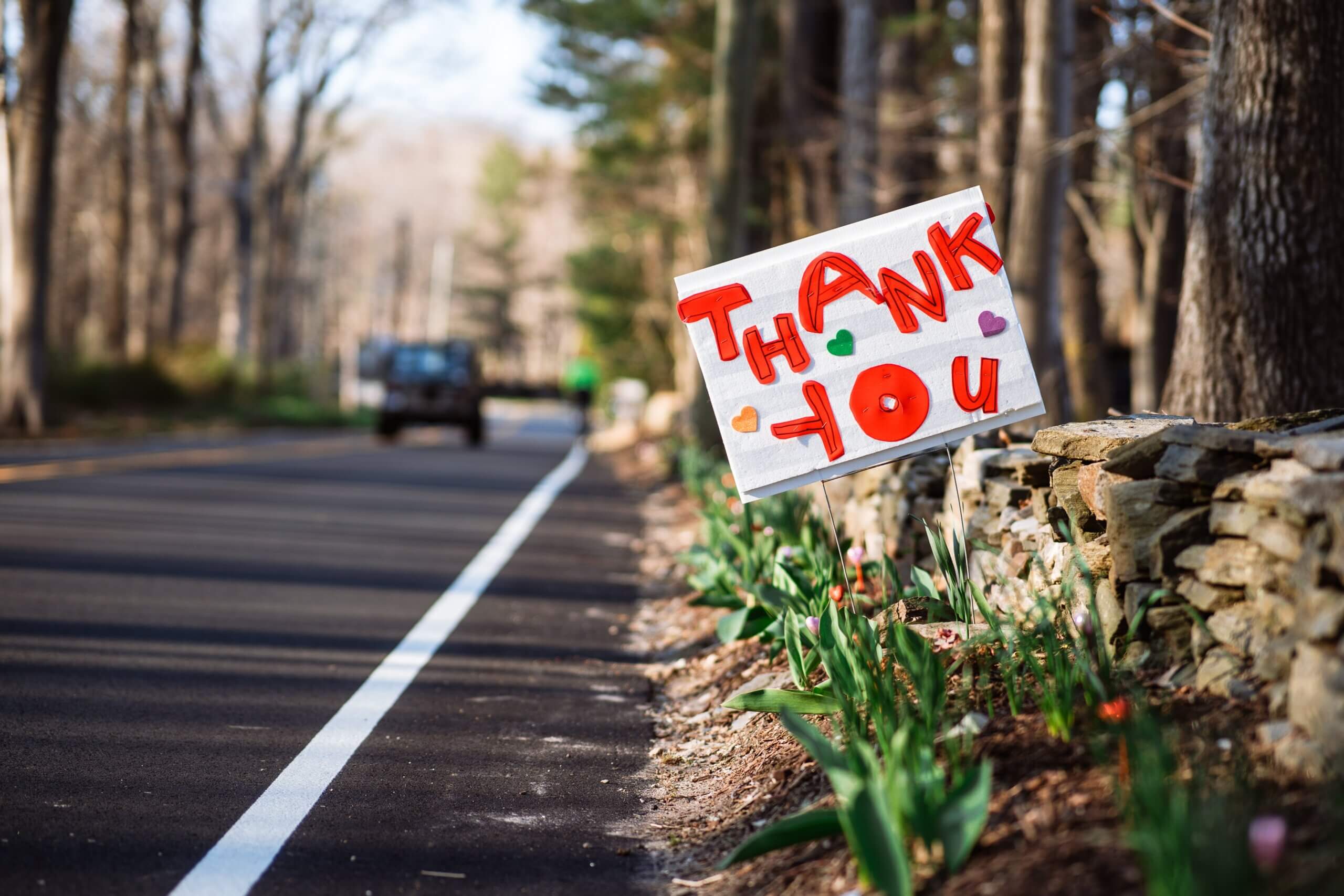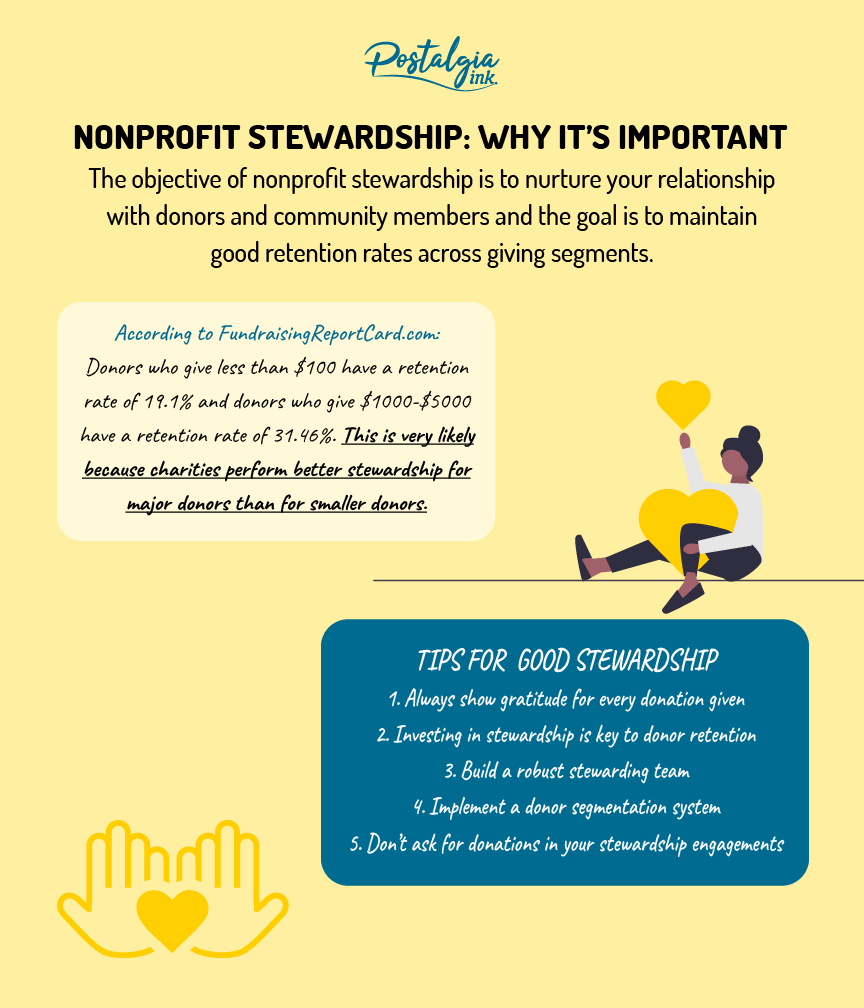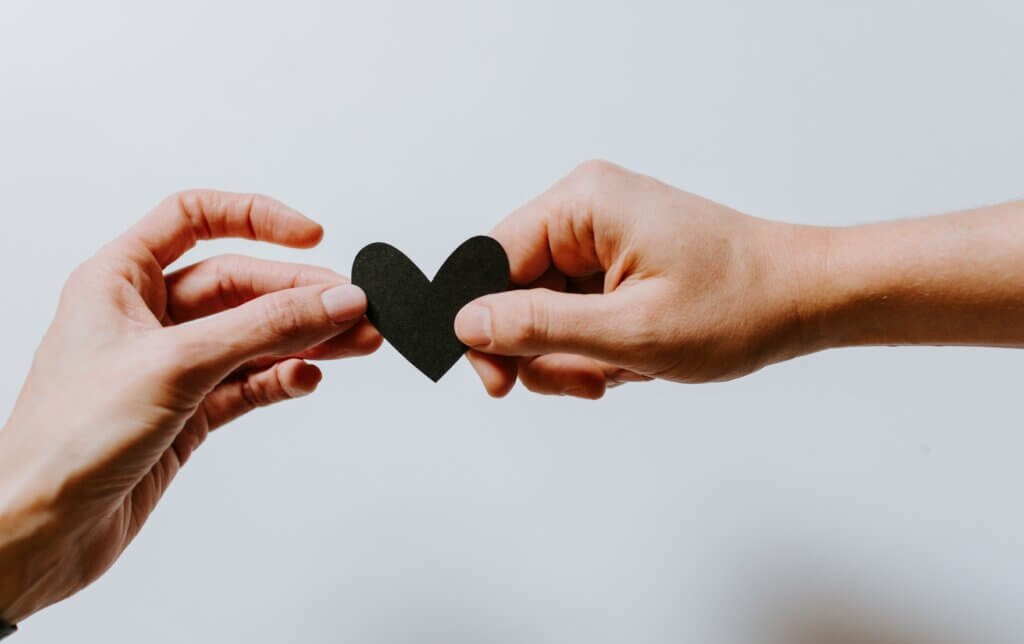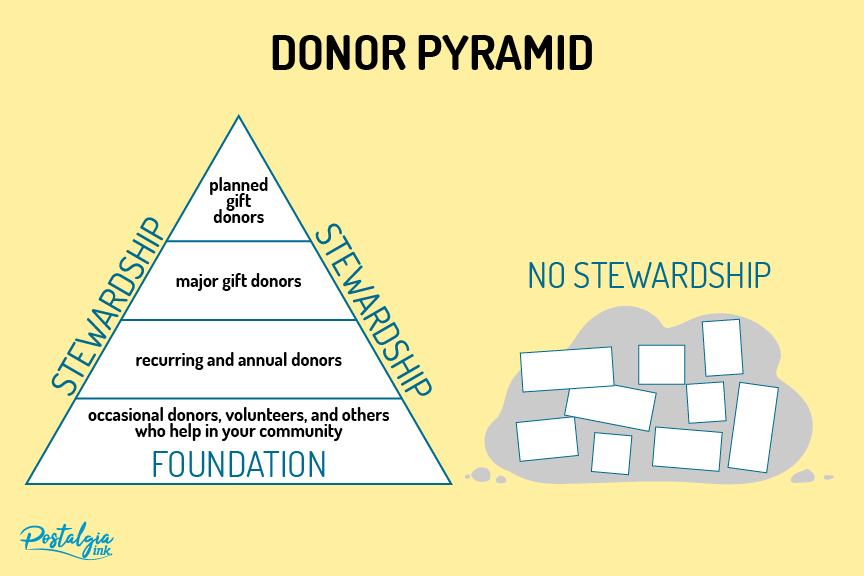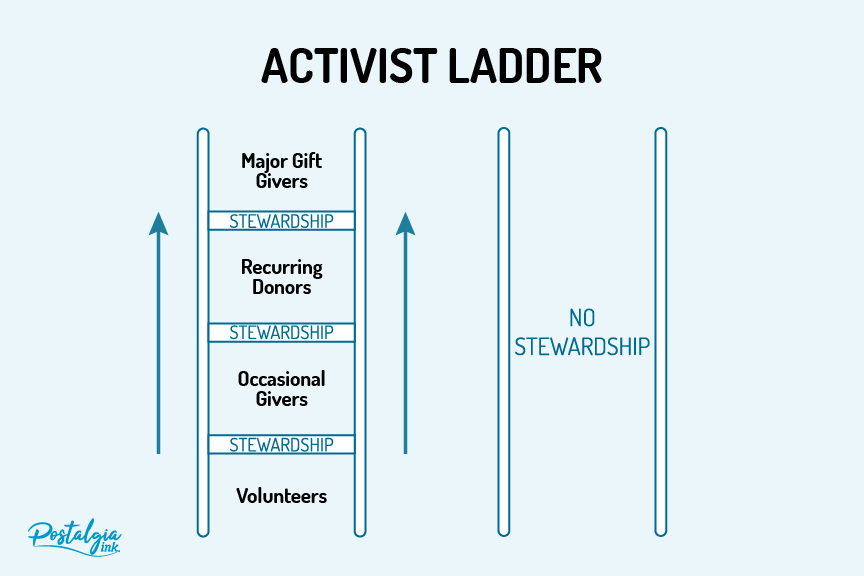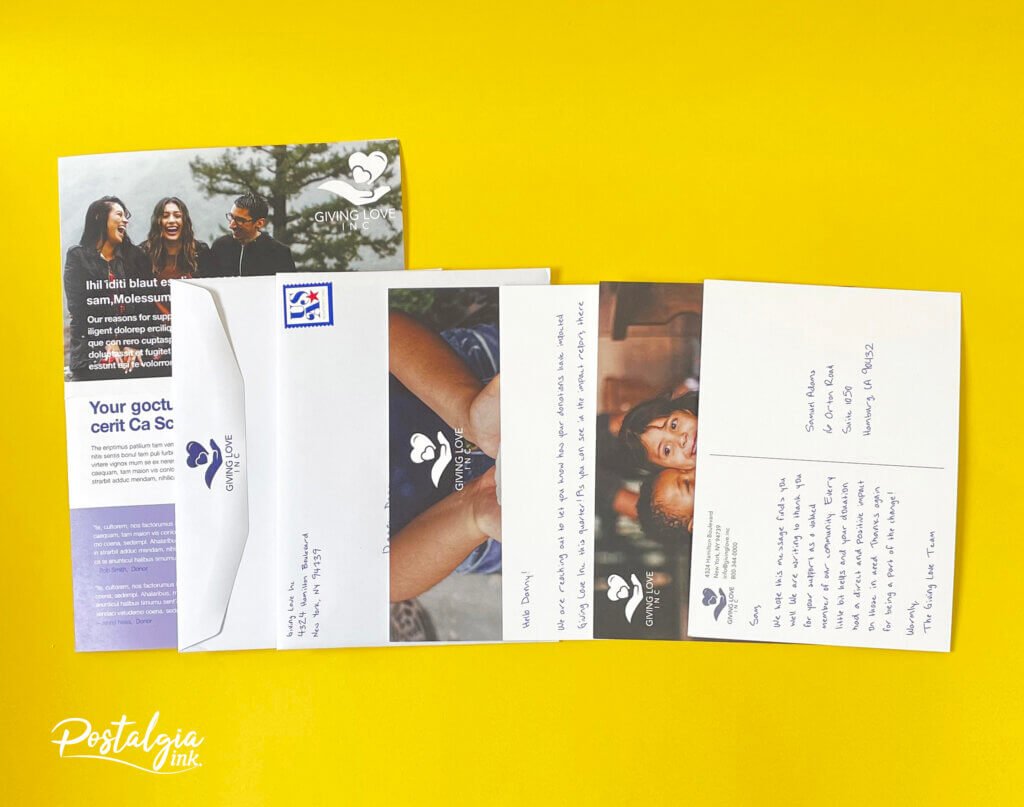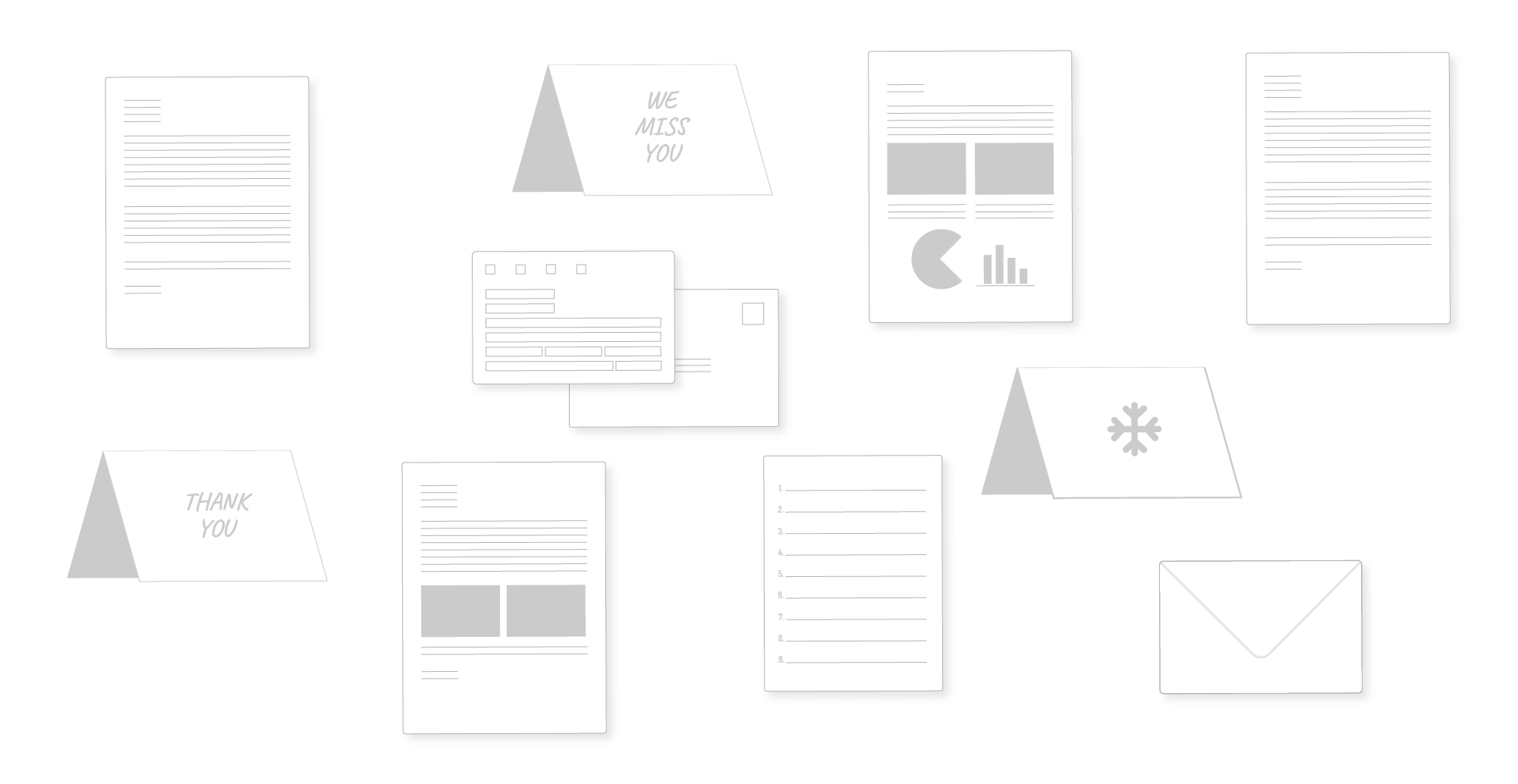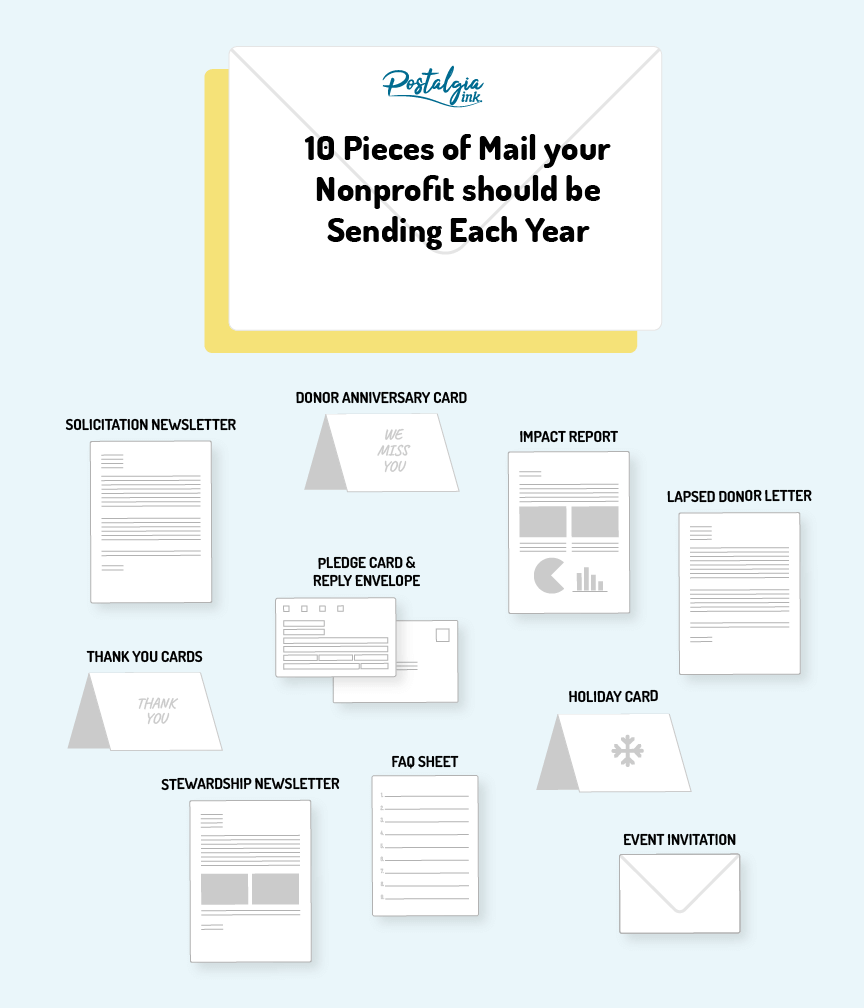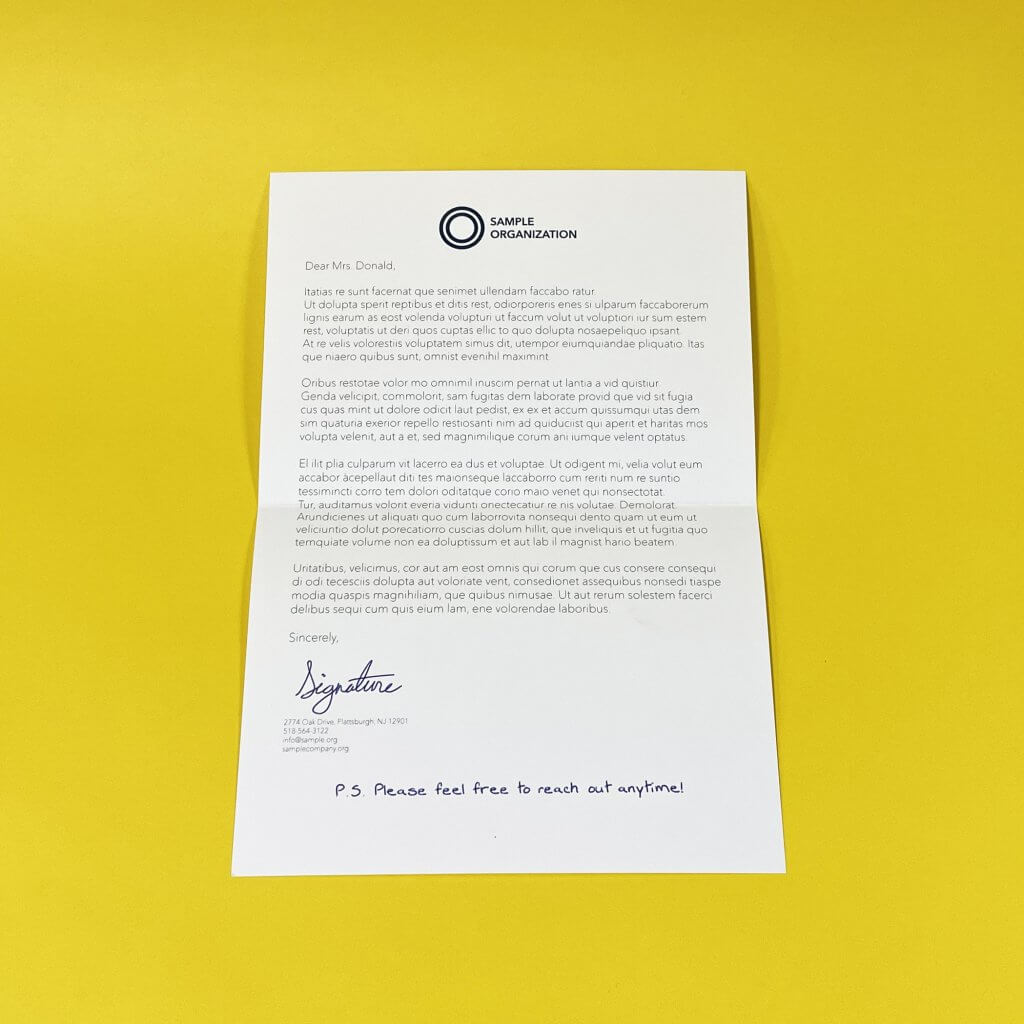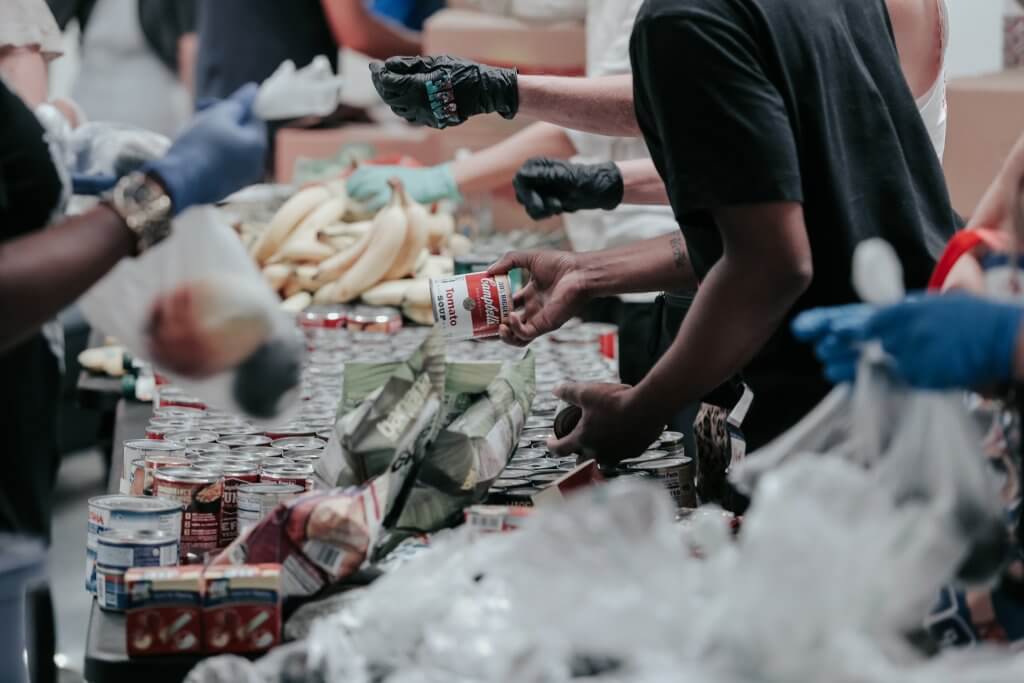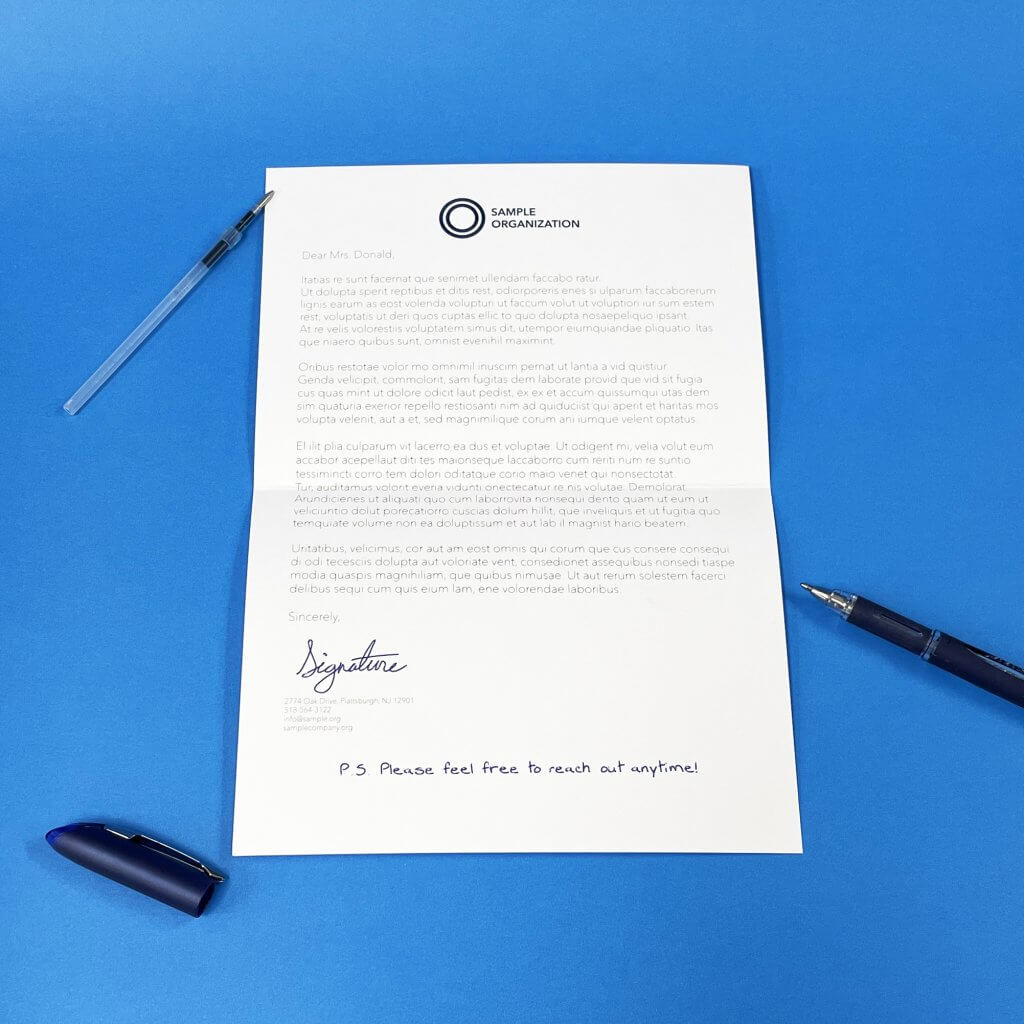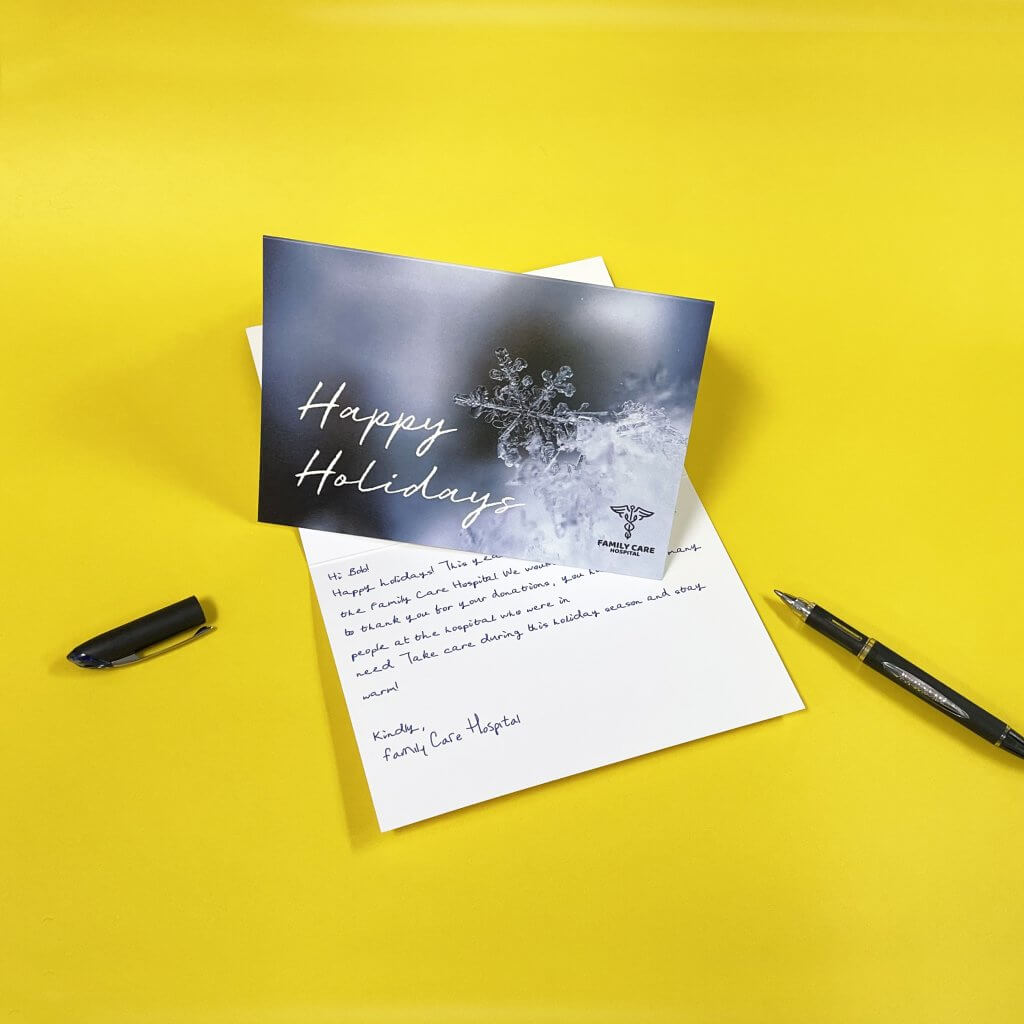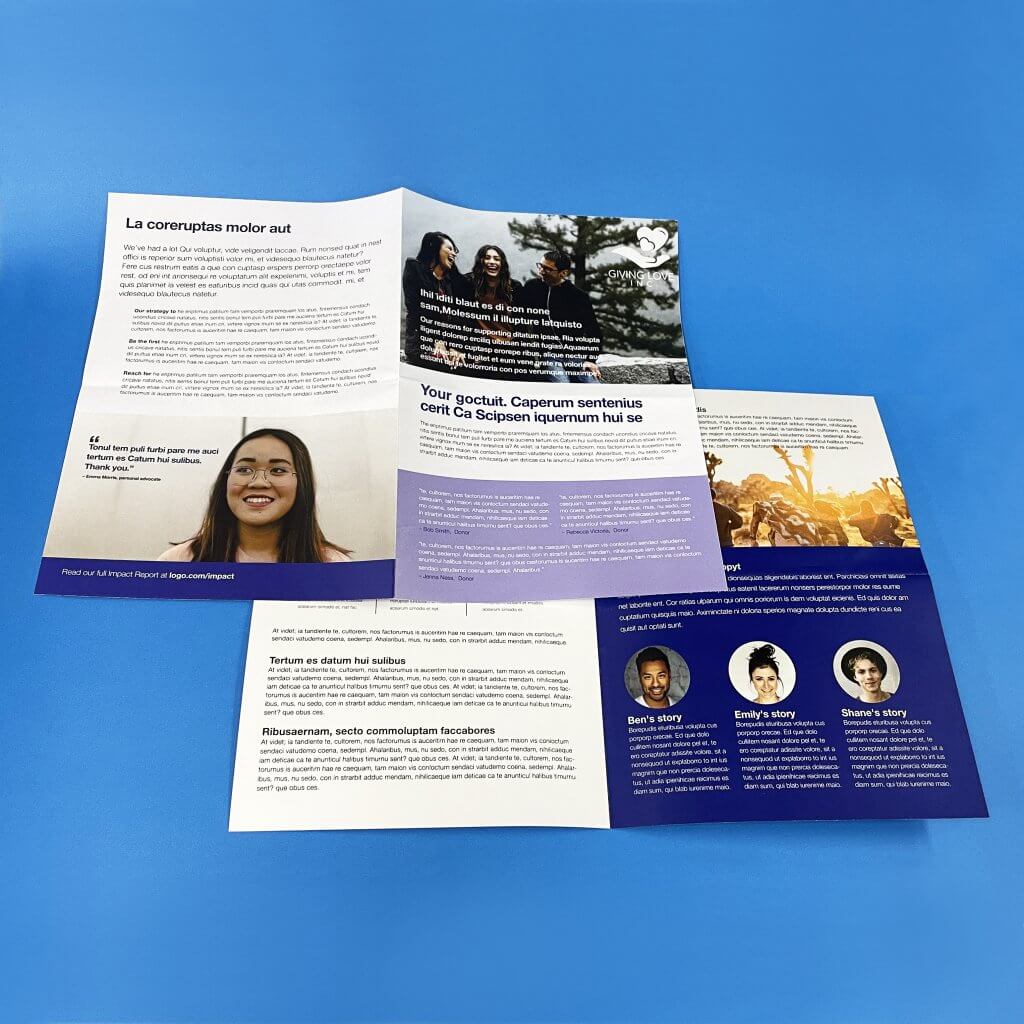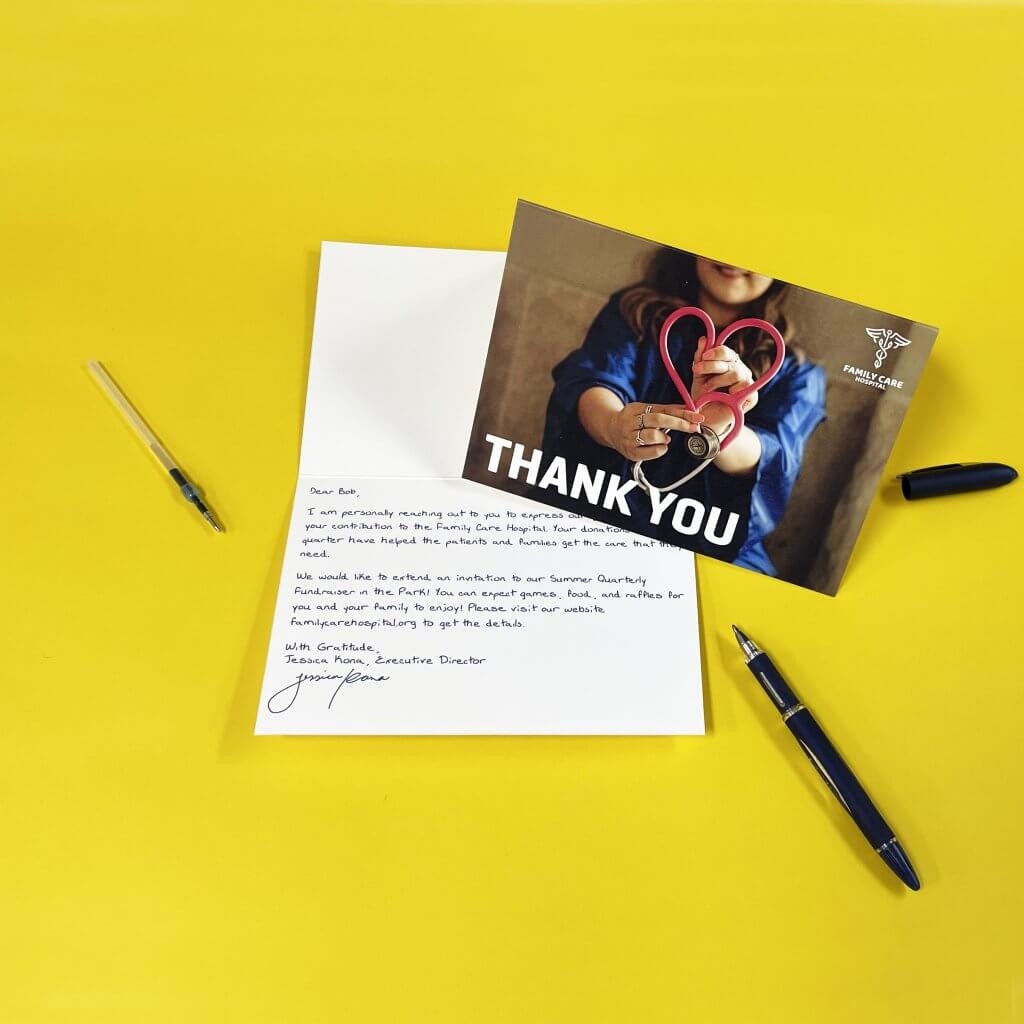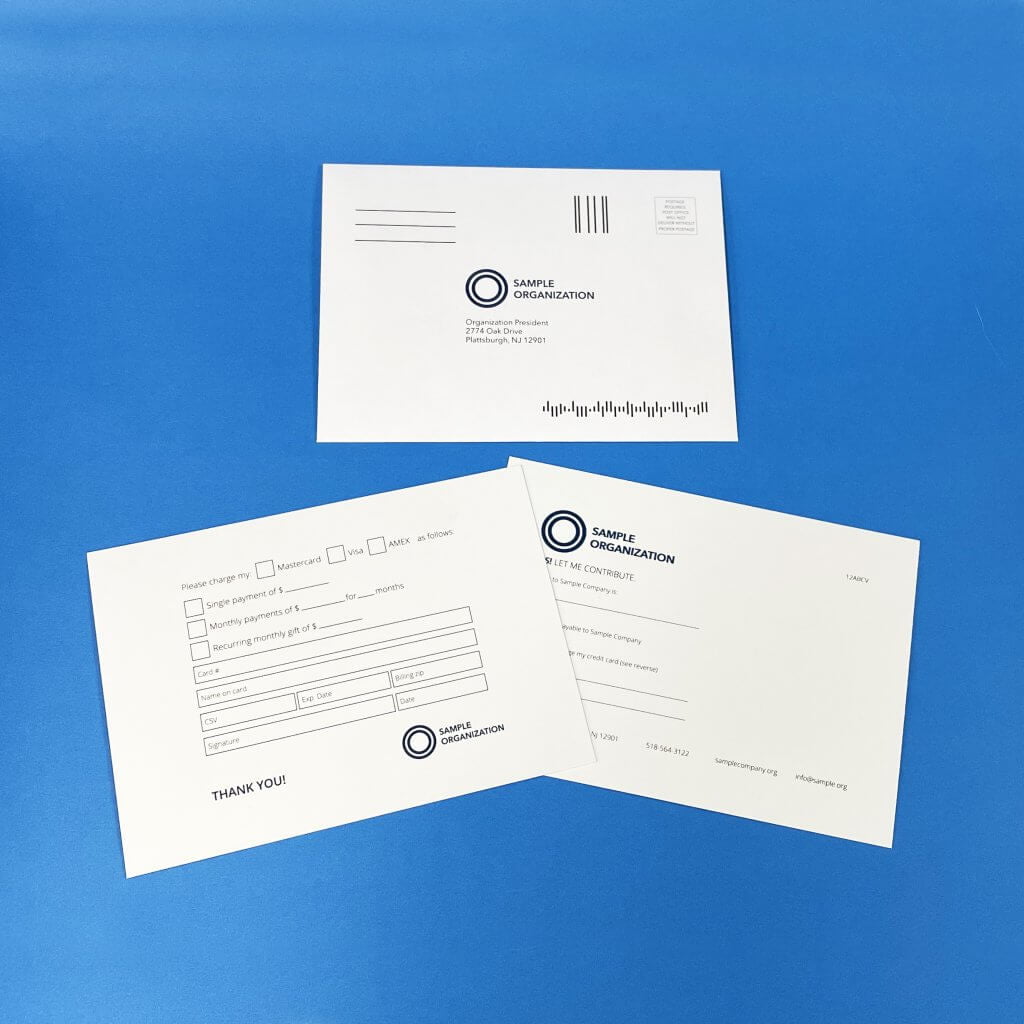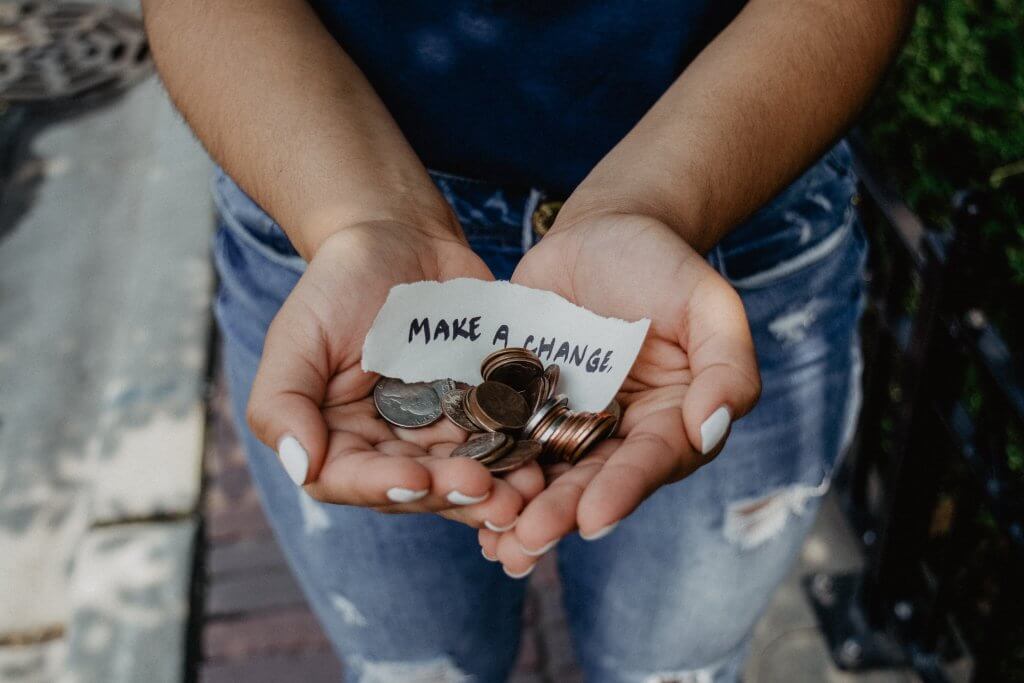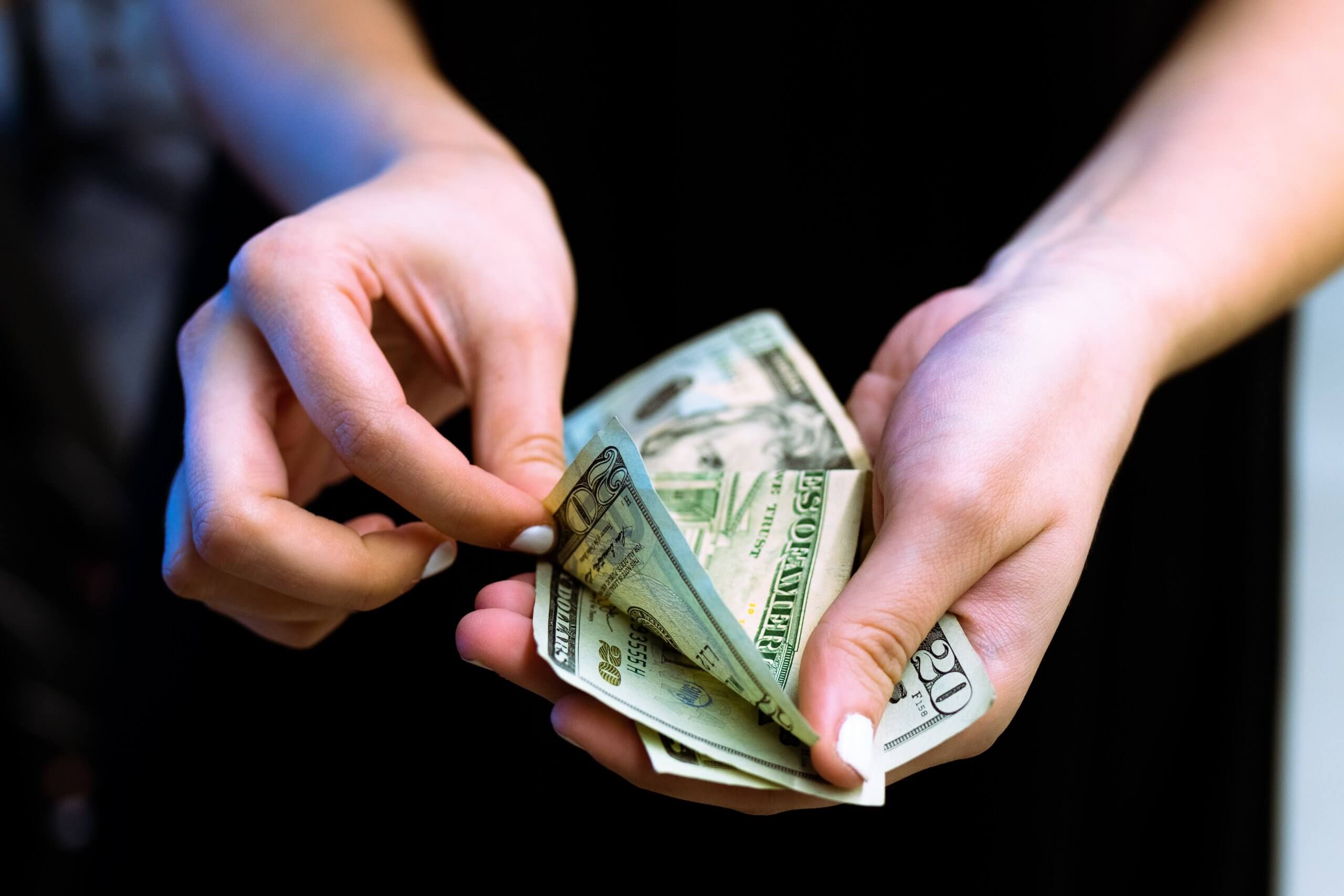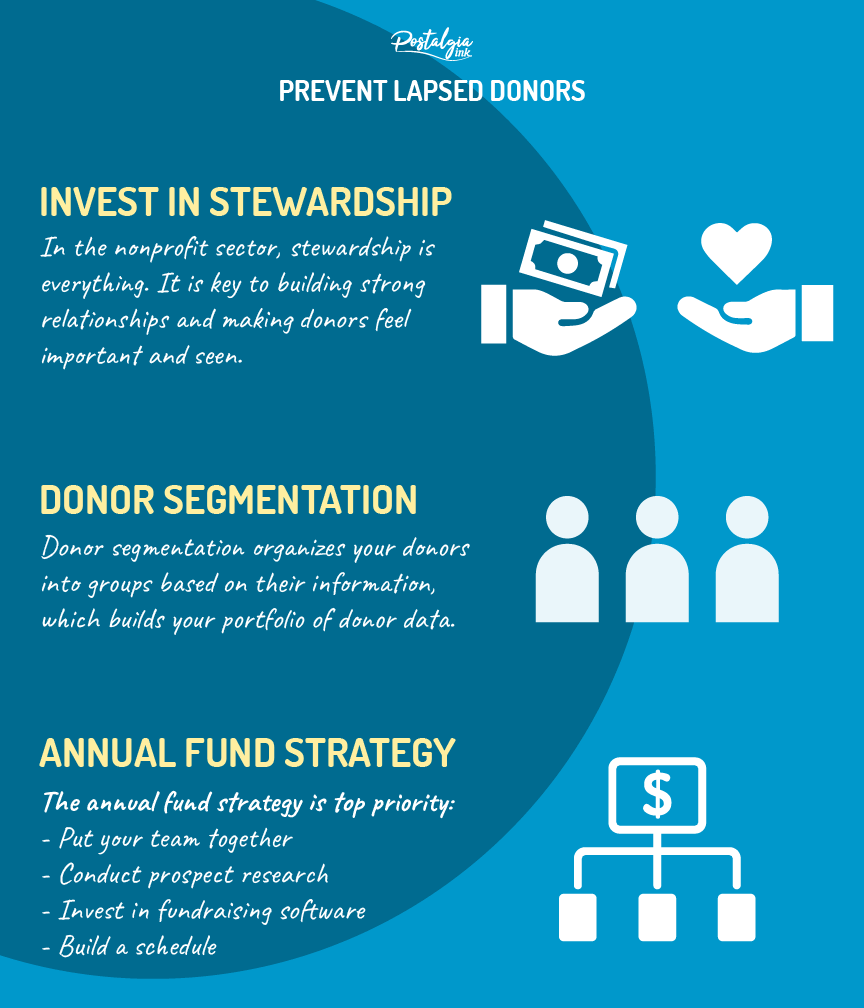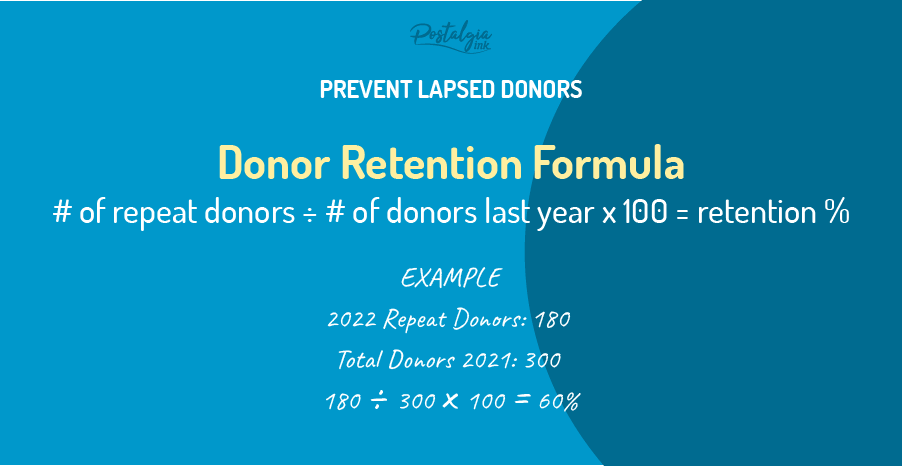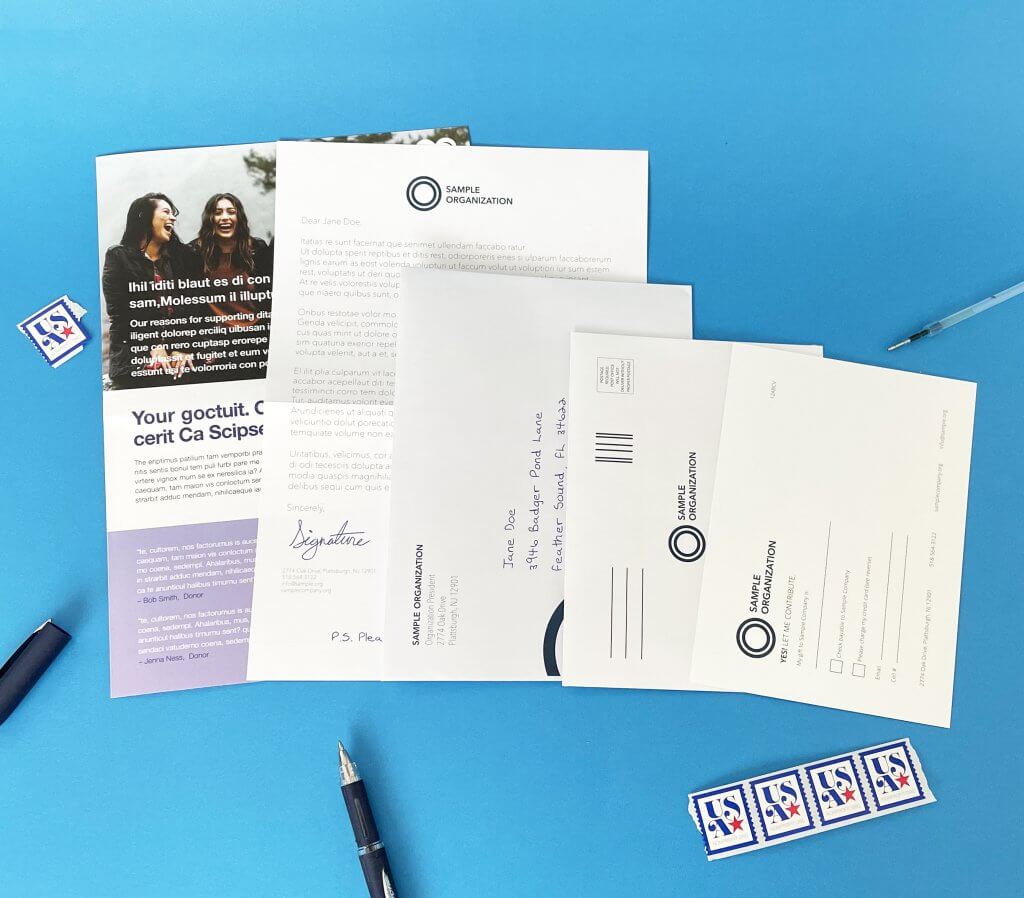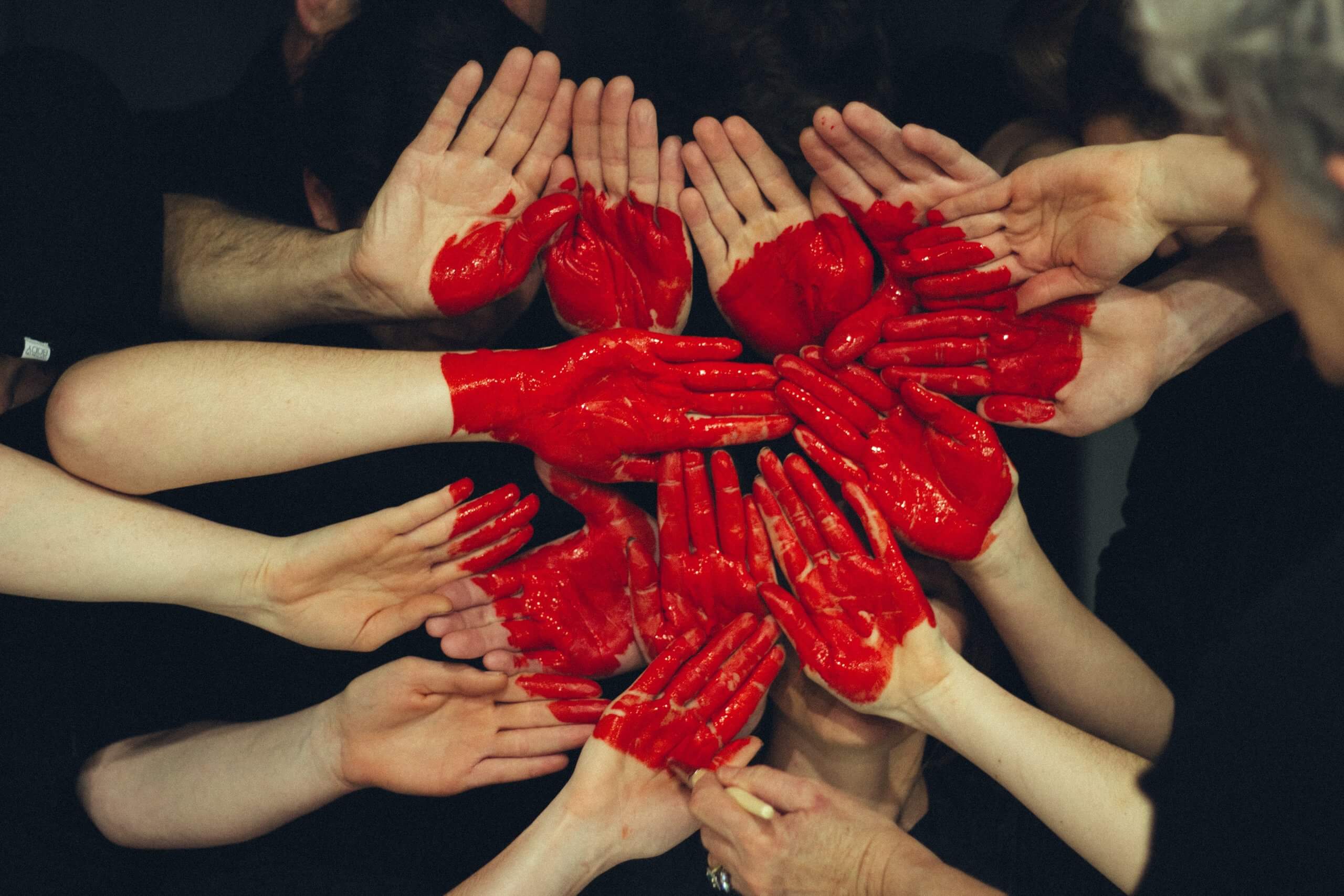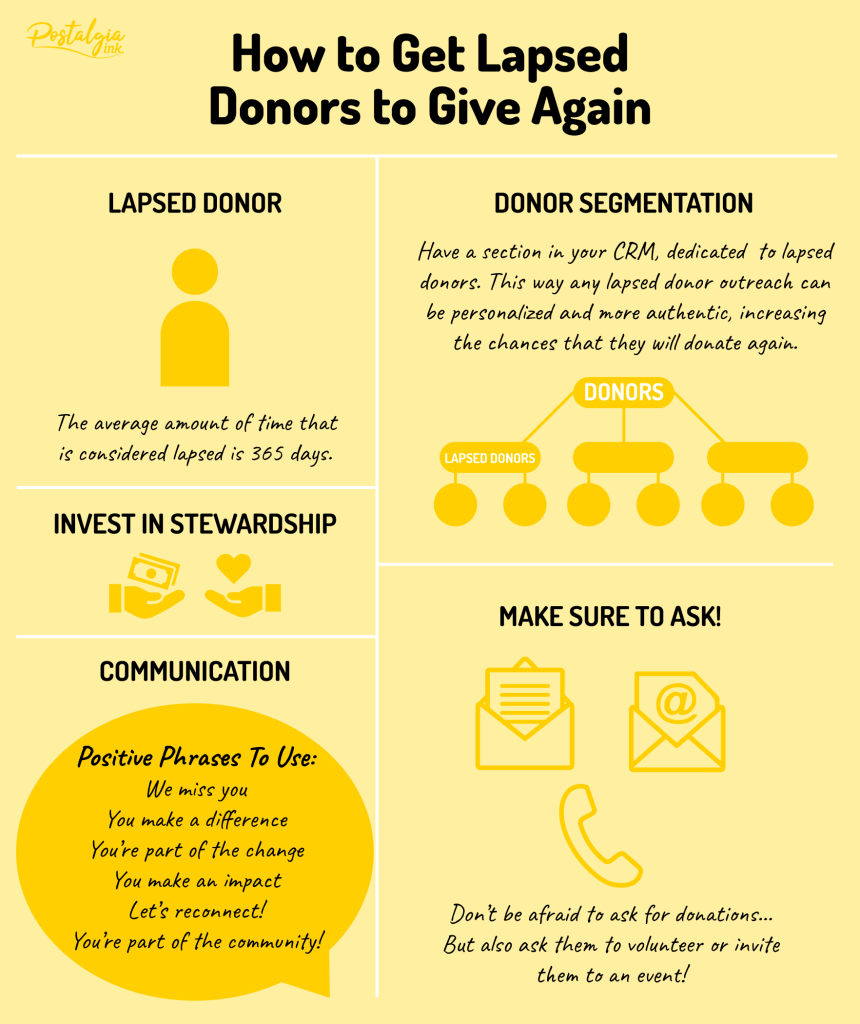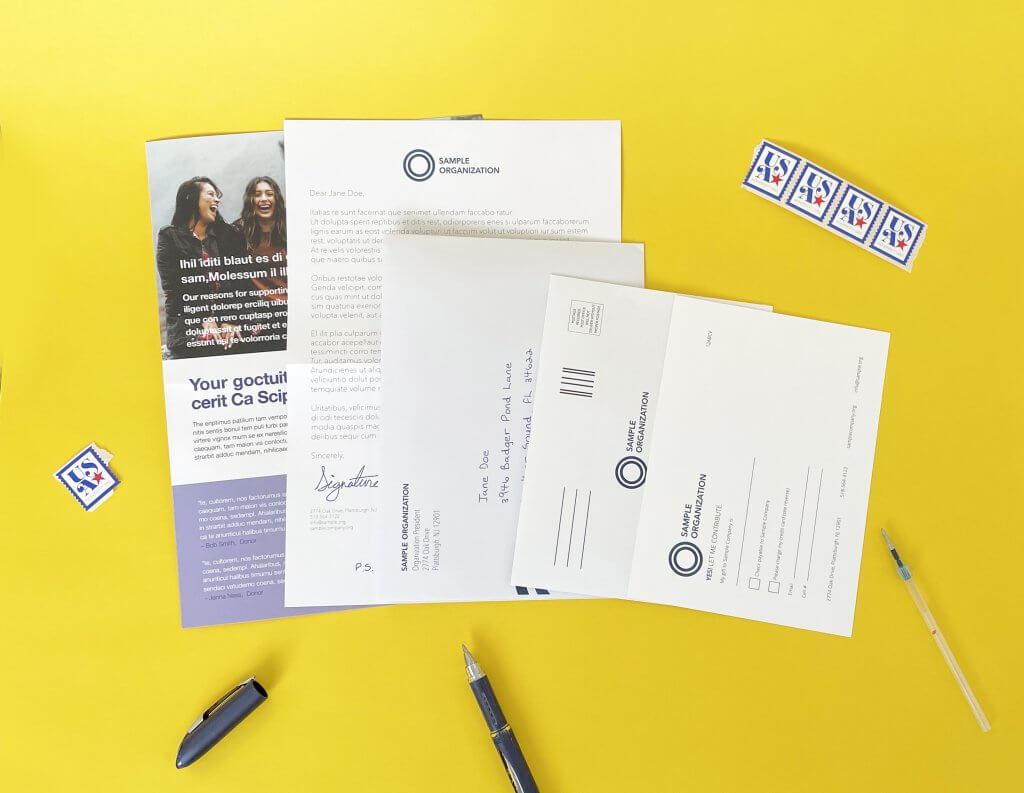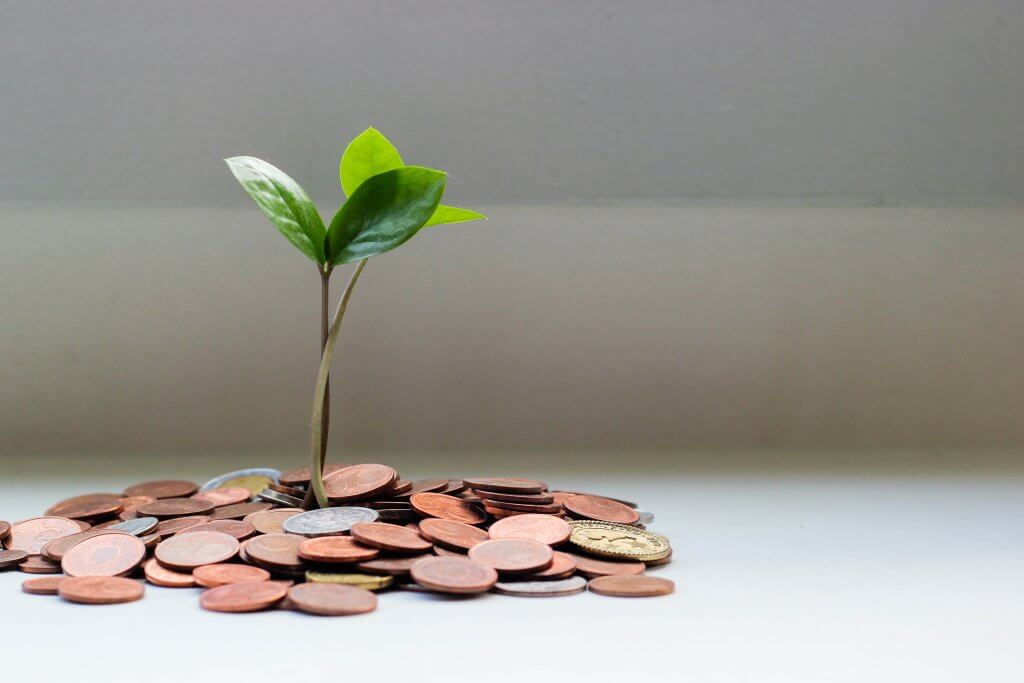INTRODUCTION
From the nostalgia-driven baby boomers to the tech-savvy millennials and members of Gen Z, each generation has its own unique relationship with direct mail. Between mid-2020 and early 2021, Summit Research undertook an exclusive nationwide study on behalf of the United States Postal Service, who released the Generational Research Report (2020-2021). This study aimed to gain valuable insights into consumers’ perceptions and behaviors regarding household mail and packages over a six-month period. The findings of this study show surprising statistics that display conclusive results that traditional direct mail makes an impact. However different approaches to mail campaigns are required depending on demographics to get the most out of marketing resources. Time is money, so it is important to strategically plan your mail pieces.
Key Topics
1. What Attracts Baby Boomers (1946–1964) to Direct Mail?
2. How does Generation X (1965–1980) Interact with Direct Mail?
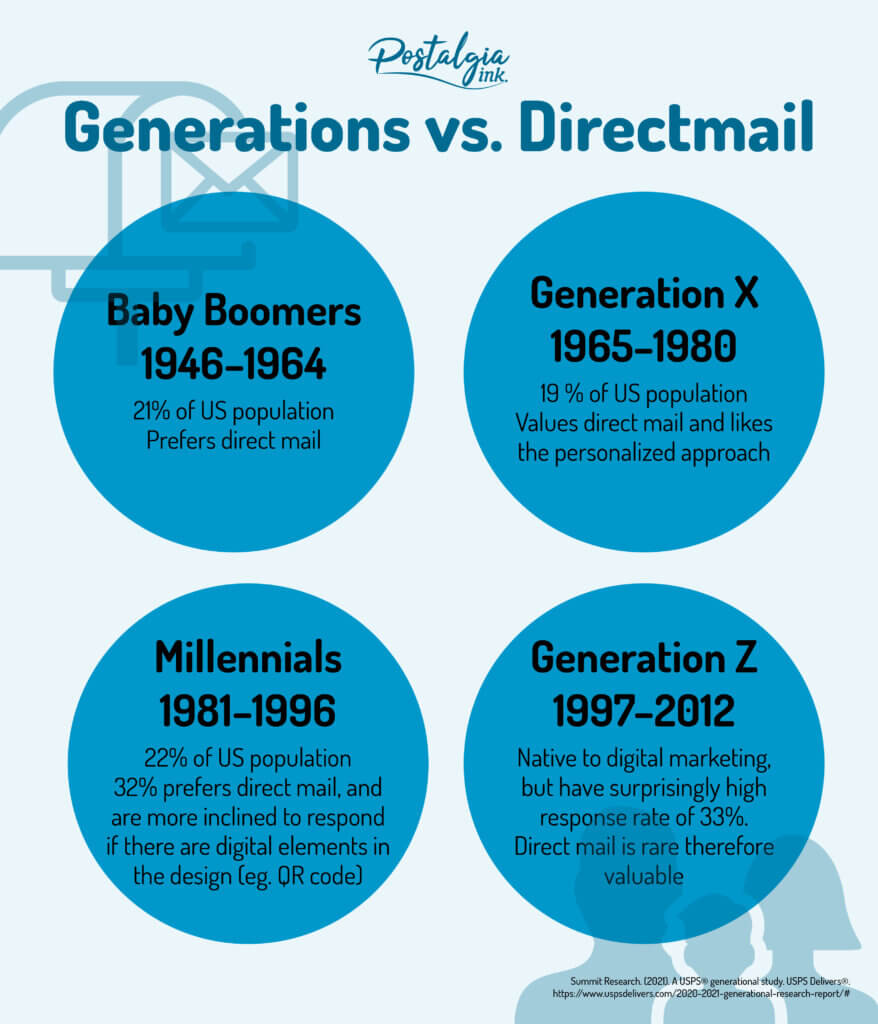
1. What Attracts Baby Boomers (1946–1964) to Direct Mail?
Baby Boomers are 58 to 77 years old, represent 21% of the population in the United States and hold a significant 70% of the disposable income. Notably, this demographic has a strong affinity for direct mail as a preferred means of communication and engagement. The preference for direct mail over email, particularly for promotional materials, is a common characteristic among baby boomers. Having grown up in a time when direct mail was prevalent, they have become accustomed to receiving physical mail and find it familiar and reliable.
One key factor that appeals to baby boomers is the tangibility of mail. They enjoy the sensory experience of holding and examining physical objects, which adds to their overall satisfaction with the communication medium.Trust is another essential aspect for baby boomers when it comes to direct mail. They may perceive it as more trustworthy compared to digital forms of communication, which can be susceptible to scams and cybersecurity threats. Avoiding technology is common, and they feel more comfortable with traditional methods of communication. Direct mail aligns with this preference, as it allows them to avoid the complexities and potential challenges associated with digital platforms.
The personalization of direct mail, such as handwritten pieces, is also a significant factor in its appeal to baby boomers. Tailoring the content to individual preferences makes them feel valued and recognized, enhancing the overall effectiveness of the campaign.

2. How does Generation X (1965–1980) Interact with Direct Mail?
Generation X are 43 to 57 years old, they make up 19% of the US population and have the highest post-tax income of any demographic. They actually outspend millennials by 41% and baby boomers by 18%.
Gen X consumers appreciate direct mail, and they value feeling special, so tailored approaches that make use of thicker papers and unique designs can create a sense of exclusivity and effectively capture their attention. This generation is not easily swayed by generic mass marketing efforts but rather responds positively to mail that speaks directly to their individual preferences and needs.
They display a keen awareness of retargeting strategies. A significant 45% of them can recognize when they receive a retargeted direct mail piece. Consequently, they expect these retargeted offers to go beyond a standard promotion and provide a better deal than what they would have received otherwise. Utilizing retargeting in direct mail campaigns should thus be strategic, showcasing exclusive incentives and significant benefits that clearly surpass previous interactions. To be successful, direct mail targeted at Gen X consumers must convey an enhanced value proposition. This means clearly communicating the additional value they stand to gain compared to other offers or alternative choices. Whether it’s exclusive discounts, personalized product recommendations, or unique benefits tailored to their preferences and lifestyles, Gen X consumers need to see a tangible advantage in responding to direct mail campaigns. Demonstrating how the offer aligns with their specific interests and values can significantly influence their engagement and response rates.
3. How do Millennials (1981–1996) Respond to Direct Mail?
Millennials are 25 to 45 years old, making up a significant portion of the U.S. population, accounting for 22% of it. Despite their sizable presence, many millennials face financial worries, with 67% expressing that finances are a frequent concern in their lives. When it comes to their relationship with direct mail, this generation showcases a mix of preferences. While a majority prefer email for communication, a notable 32% still hold a preference for postal mail. 64% of millennials have indicated that they would likely read direct mail, presenting an opportunity for marketers to engage with this tech-savvy demographic.
One crucial aspect for effectively reaching millennials through direct mail is personalization and relevance. As a digitally native generation, they are accustomed to tailored online experiences. If direct mail can replicate this personalization and demonstrate relevance to millennials’ individual needs and preferences, it stands a higher chance of capturing their attention. Customized content that speaks directly to their interests, purchase history, and lifestyle can significantly improve the chances of a positive response.
To fully engage millennials, combining direct mail with digital elements is a powerful strategy. Multichannel integration, such as incorporating personalized URLs (PURLs) and QR codes, can enhance the millennial experience and increase their engagement.
4. Is Direct Mail Relevant for Generation Z (1997–2012)?
Generation Z, composed of teens and young adults, constitutes a significant 20% of the U.S. population. Despite being a digital native generation, Gen Z surprisingly appreciates direct mail as a marketing channel. Direct mail offers them a unique and tangible experience that texts and emails simply cannot replicate. In a world where digital interactions dominate, receiving physical mail stands out and holds a special appeal for this demographic. The impact of direct mail on Gen Z’s purchasing decisions is noteworthy, with 33% of Gen Z consumers indicating that they are more likely to make a purchase if they see it in the mail.
Gen Z’s innate familiarity with creative tools and their desire for novel experiences make them highly responsive to innovative and eye-catching elements in direct mail campaigns. Brands that embrace innovative and visually appealing designs can better engage with this generation and leave a lasting impression.
In the digital era, omni-channel approaches are essential to capturing Gen Z’s attention. QR codes, for instance, offer seamless integration between physical and digital experiences. Gen Z appreciates such interactive elements, allowing them to engage further with brands through their smartphones and other devices.
Surprisingly, direct mail has become the “dark horse” for this generation. Amid the flood of digital marketing, physical mail stands out as an unexpected and refreshing means of communication, making it a powerful tool for reaching and connecting with Gen Z. By the same token, handwritten pieces hold a unique charm for Gen Z. In a world dominated by automation and digital communication, receiving something handwritten feels personal and authentic, resonating deeply with this generation’s desire for genuine connections with brands.
CONCLUSION
In today’s rapidly evolving marketing landscape, understanding the unique preferences and behaviours of different generations is crucial for successful direct mail campaigns. Baby boomers’ nostalgia-driven sentiments make them more receptive to personalized and heartfelt messages, emphasizing the importance of connecting on an emotional level. On the other hand, gen z’ tech-savviness calls for interactive and visually appealing designs that capture their attention amidst the digital noise.
The USPS’s Generational Research Report (2020-2021) and Summit Research’s nationwide study offer valuable insights into consumers’ perceptions and behaviours related to household mail and packages. These studies provide marketers with data-driven guidance, helping them develop targeted and effective direct mail strategies. While the digital realm has expanded marketing opportunities, the findings from these studies demonstrate that traditional direct mail continues to hold its ground. By leveraging the tangible and sensory experience direct mail offers, brands can create memorable interactions and leave a lasting impression on recipients.
The value of authenticity is undeniable, and when it comes to credibility, nothing surpasses the impact of mail, particularly handwritten pieces. At Postalgia, we are a forward-thinking, comprehensive mail service provider, utilizing cutting-edge printing technology to transform your campaign vision into a reality. Our seamless process includes designing pieces with QR codes, employing variable data printing, and ensuring your data is clean and accurate. As specialists in handwritten direct mail, we have proven success in increasing open rates and fostering goodwill, maximizing the effectiveness of both current and future campaigns. Get in touch with us today to create mail that not only gets opened but also leaves a lasting impact on your audience.
Want to level up your direct mail? Contact us.



